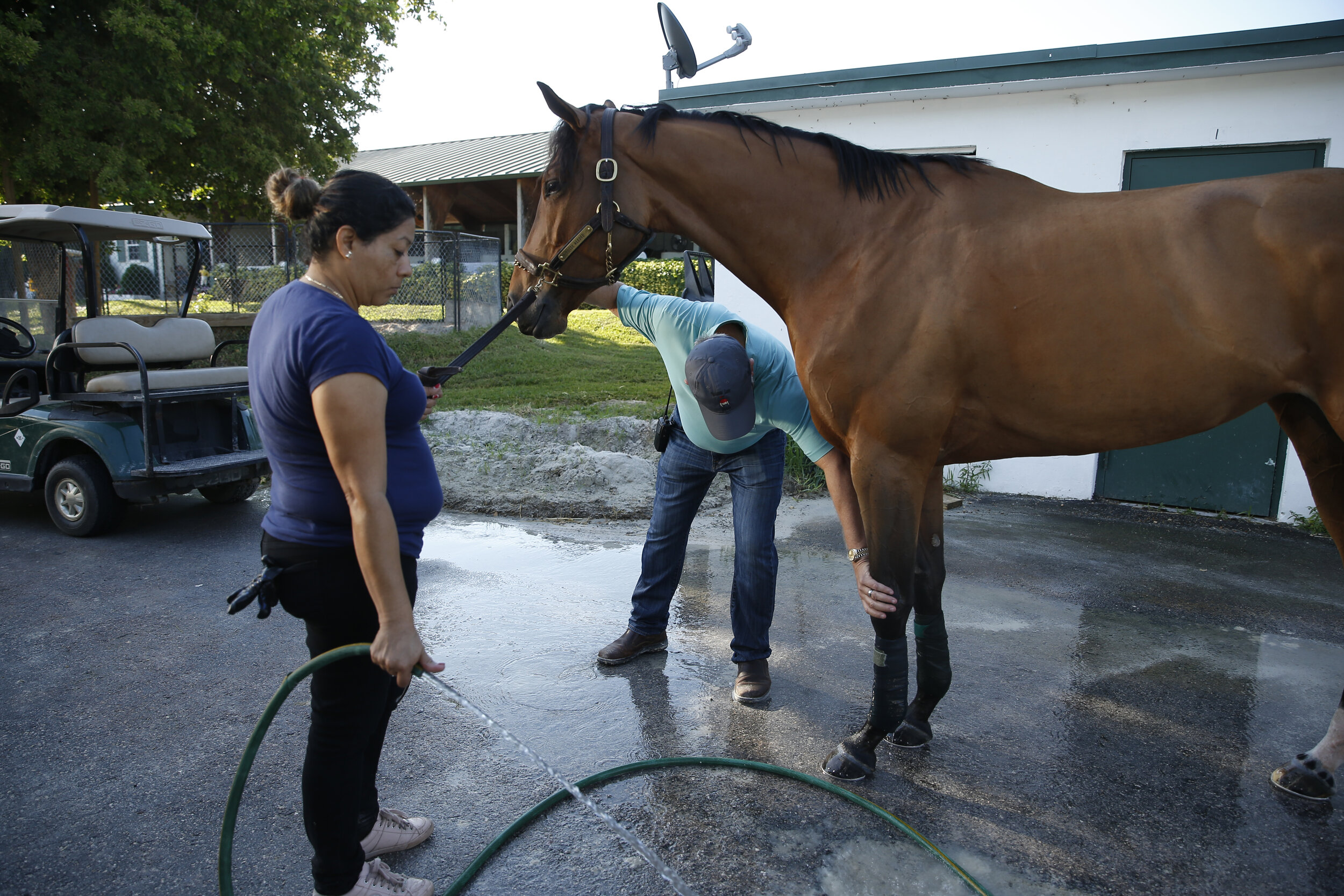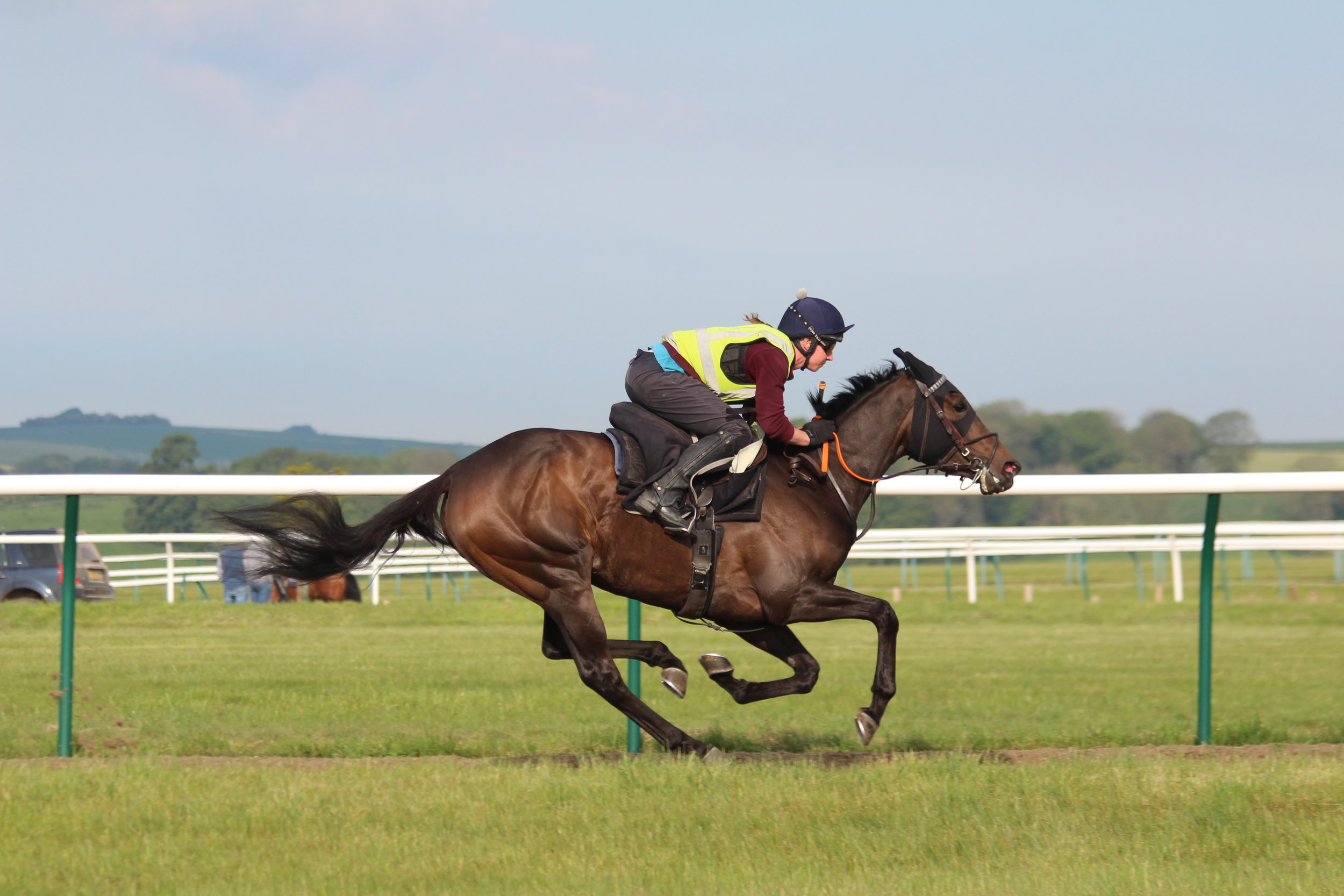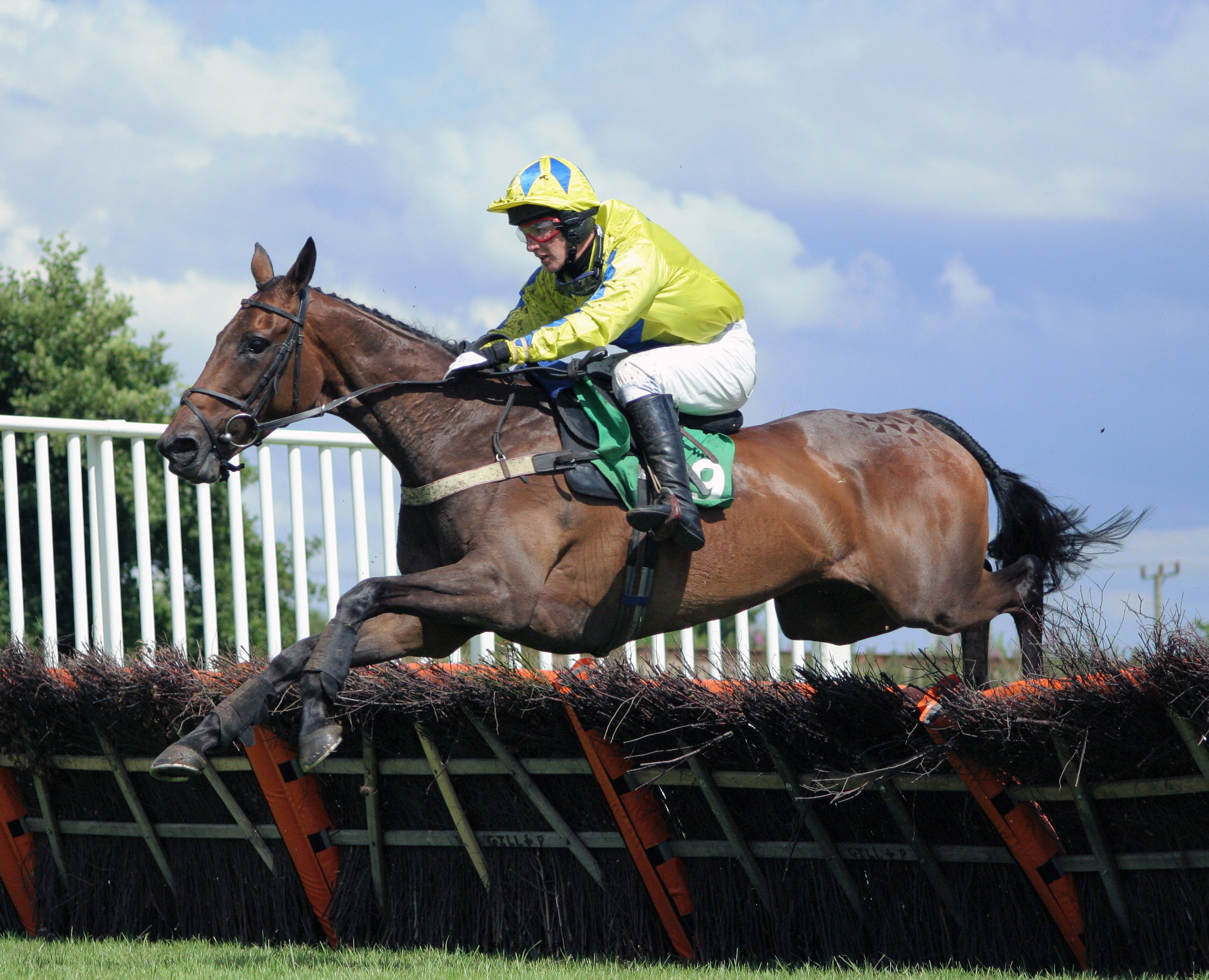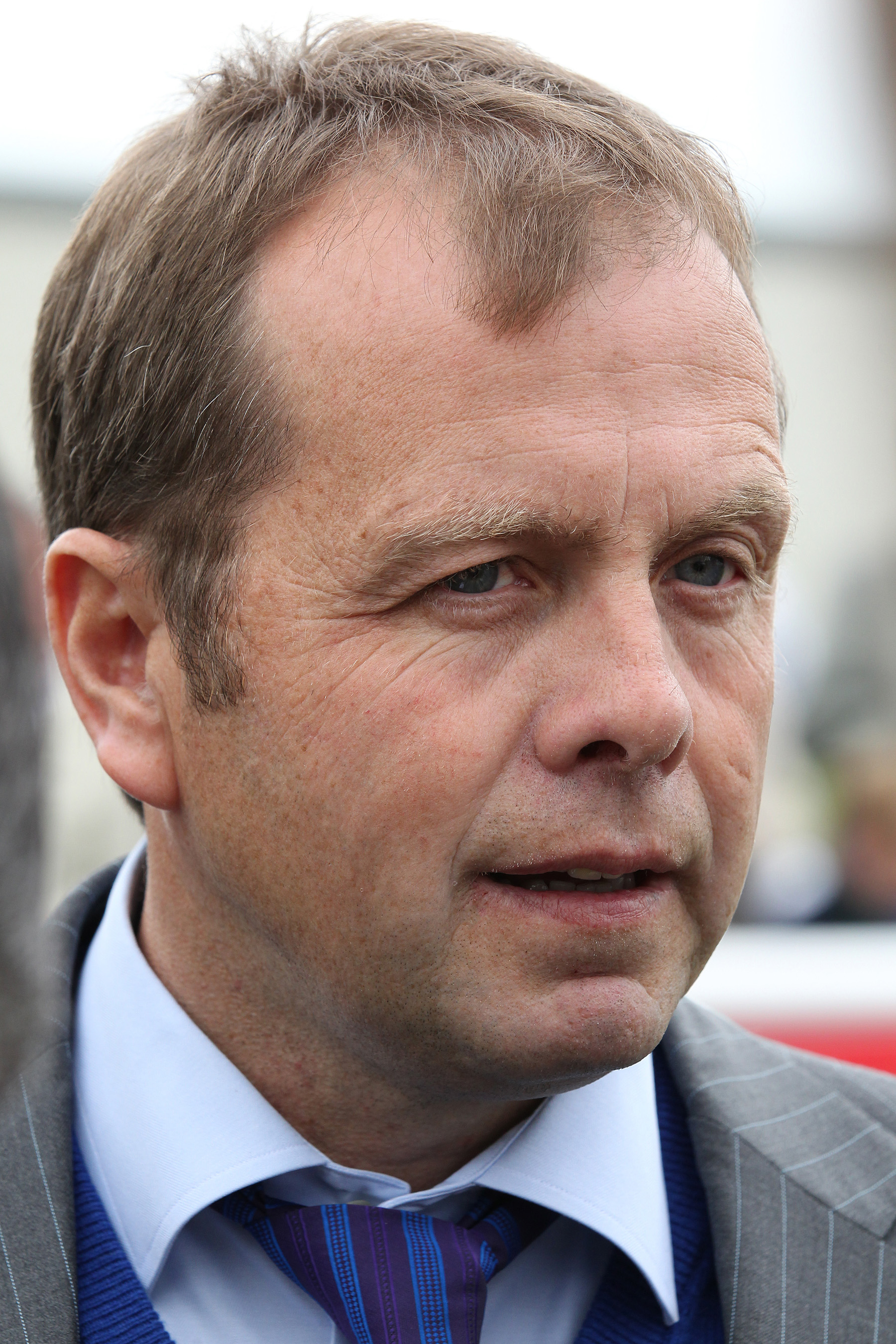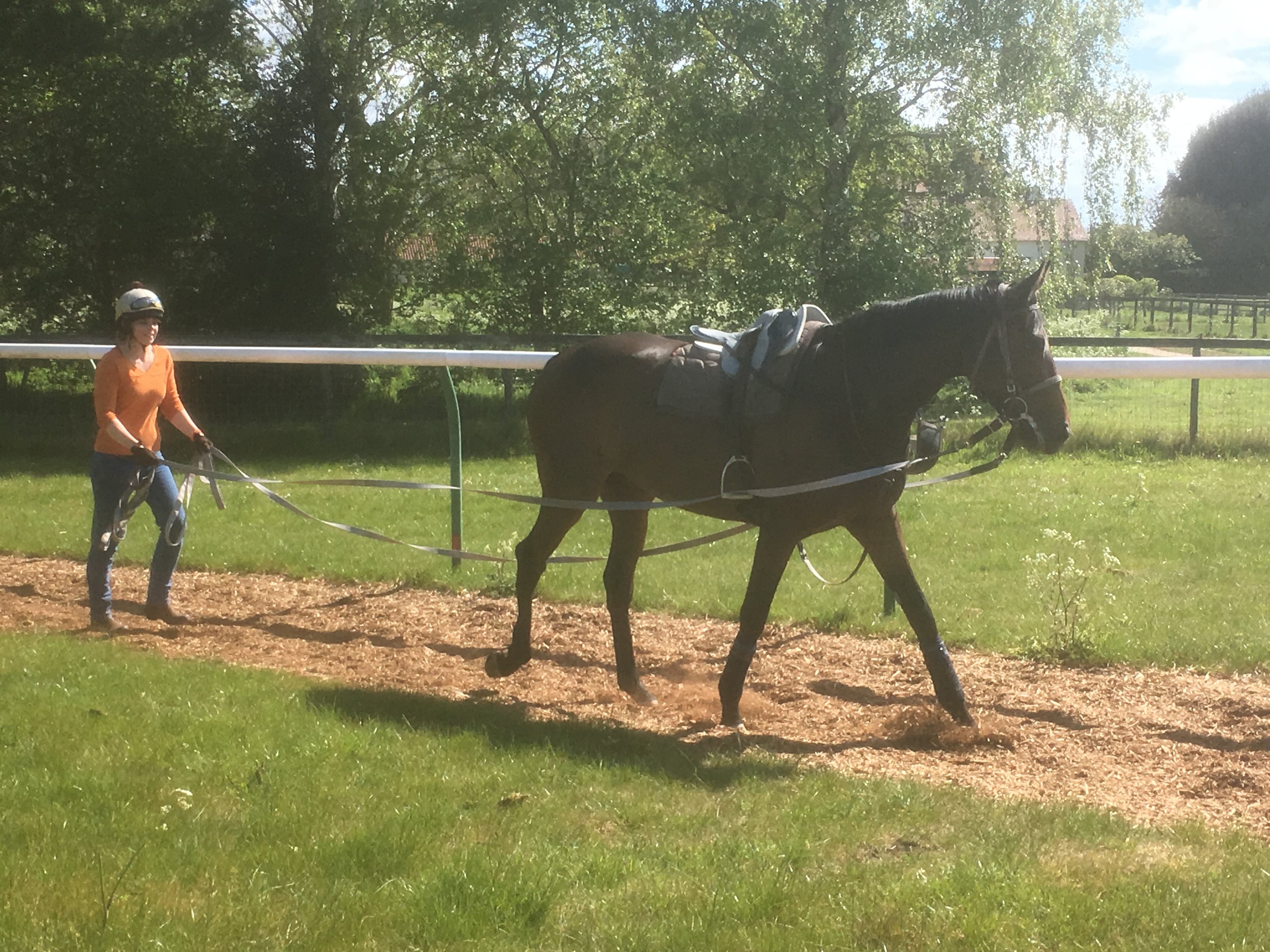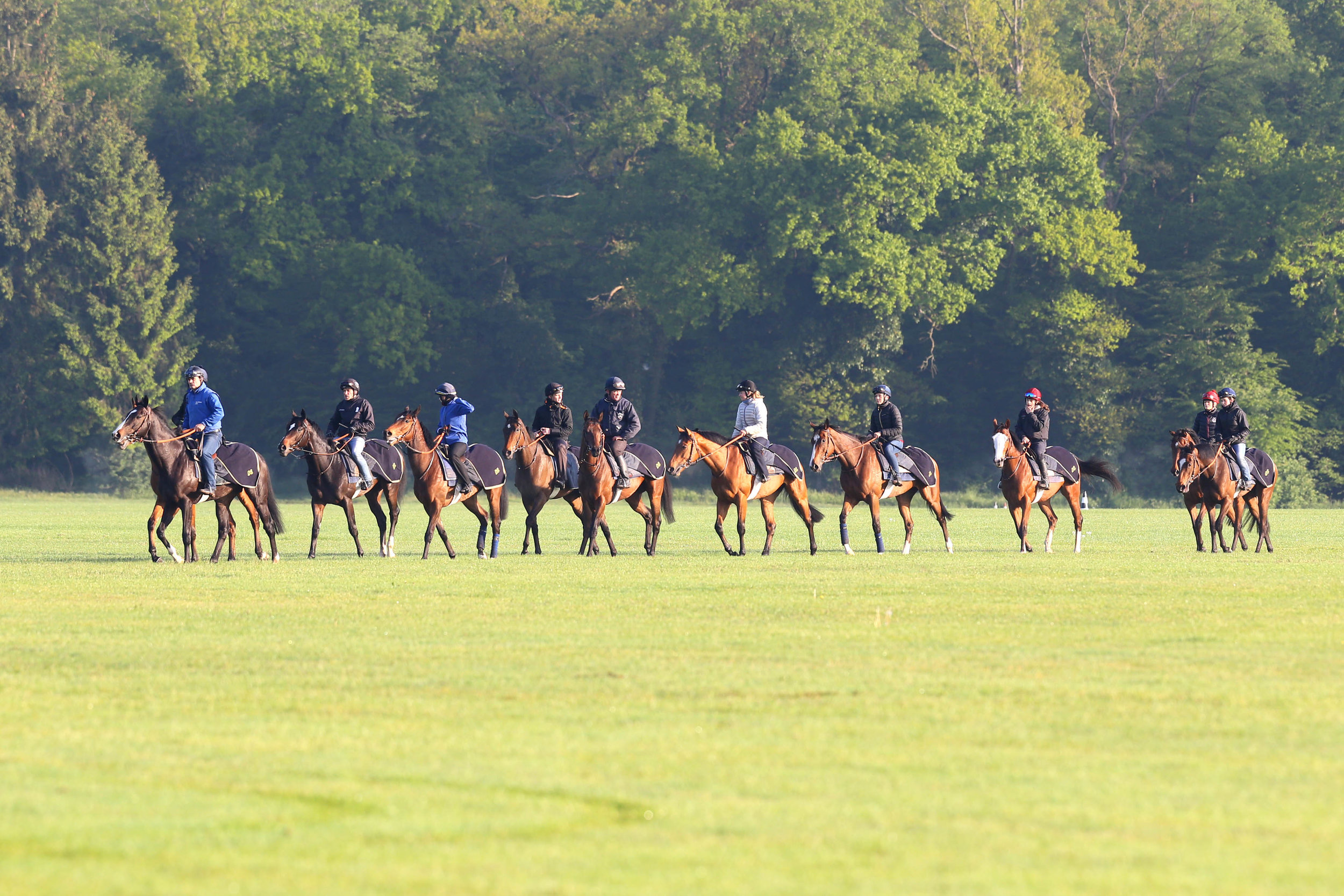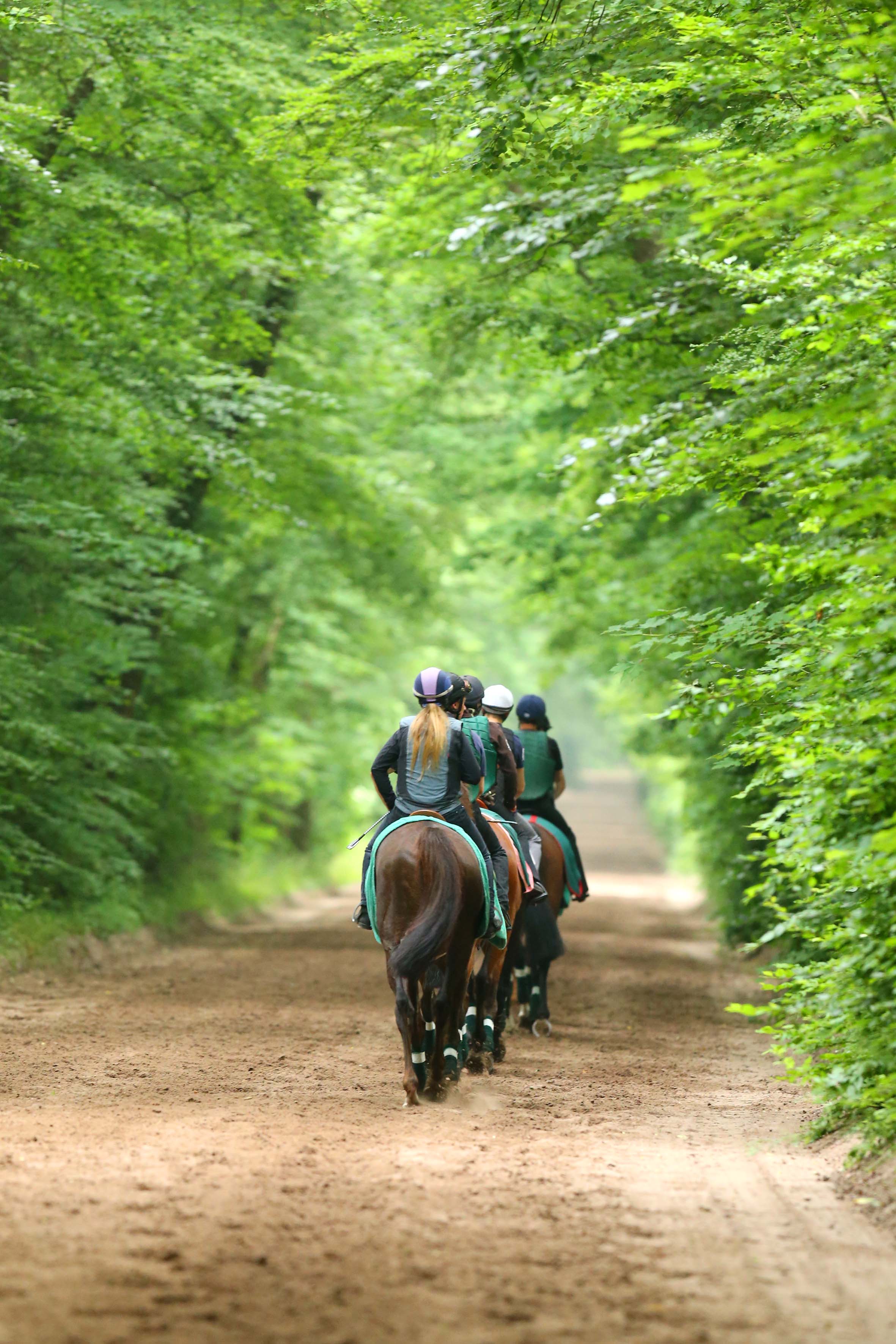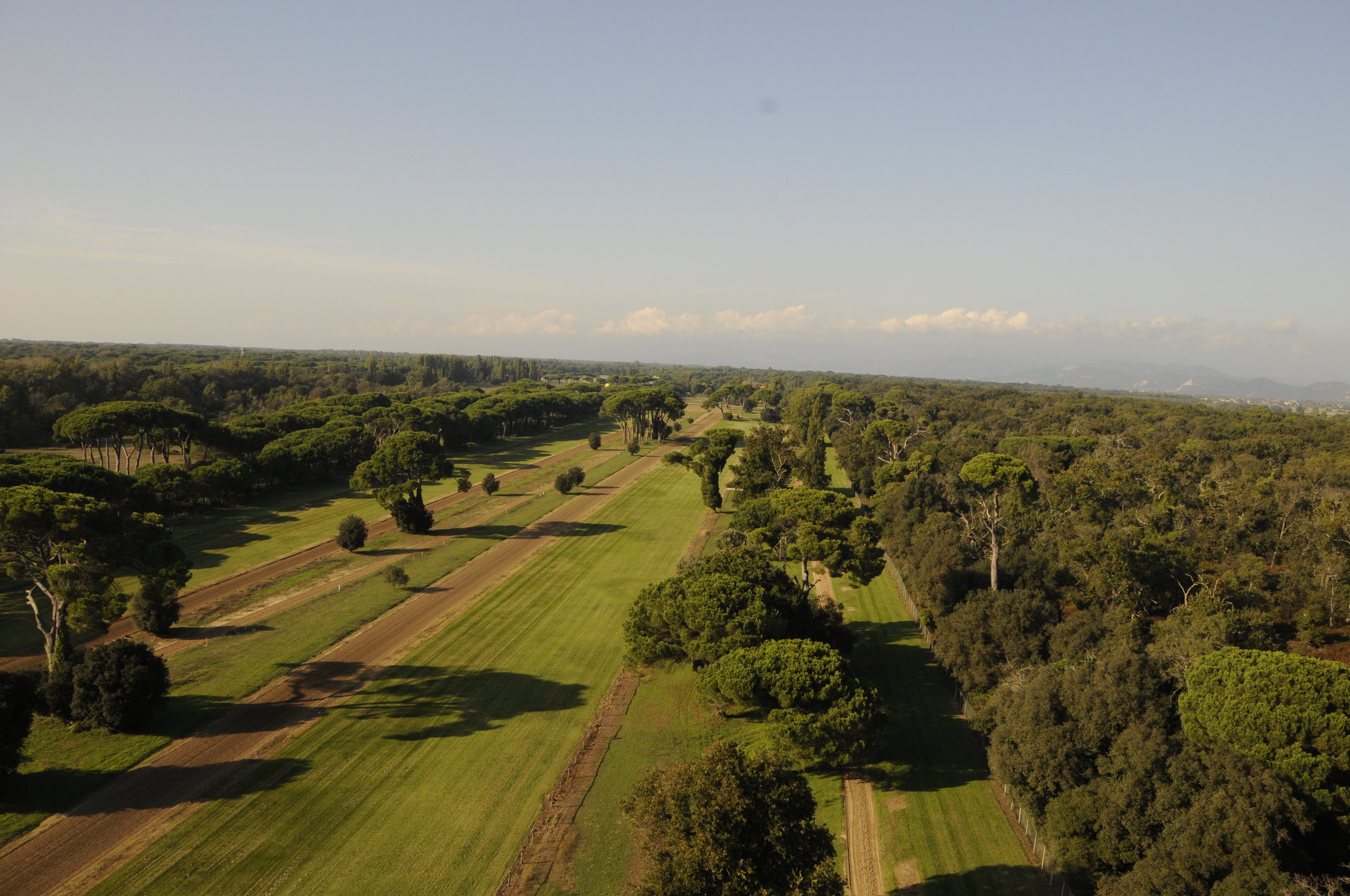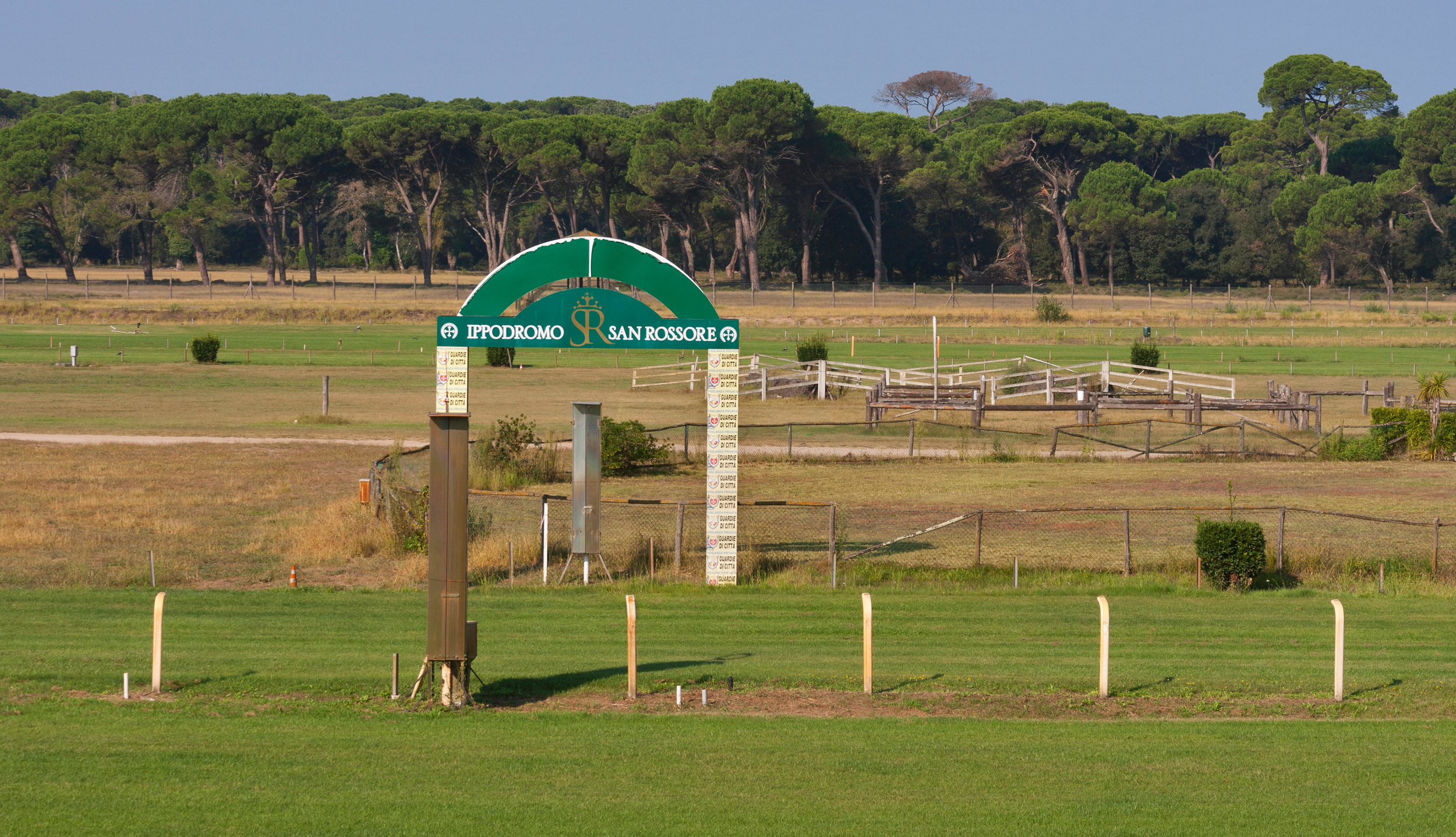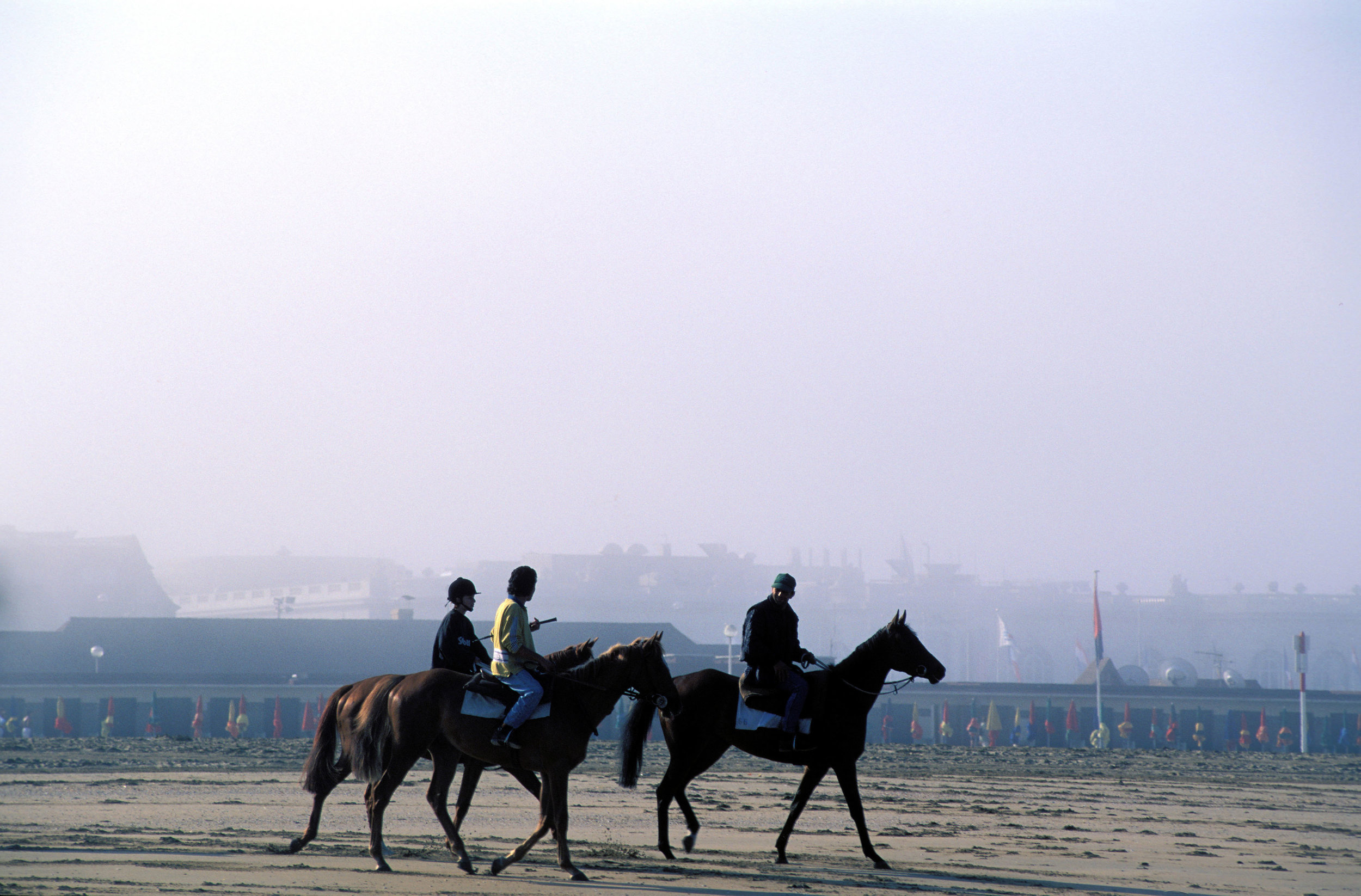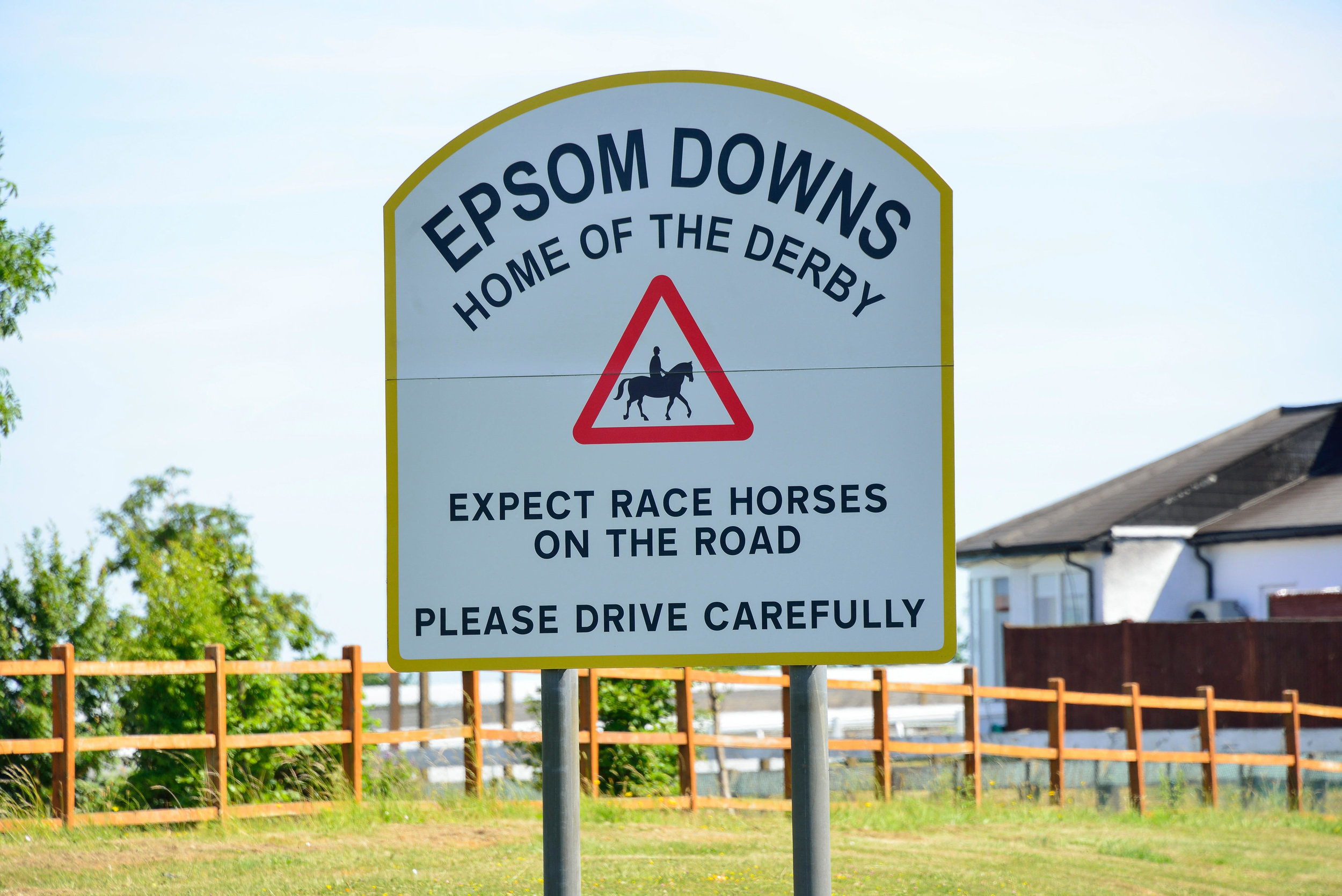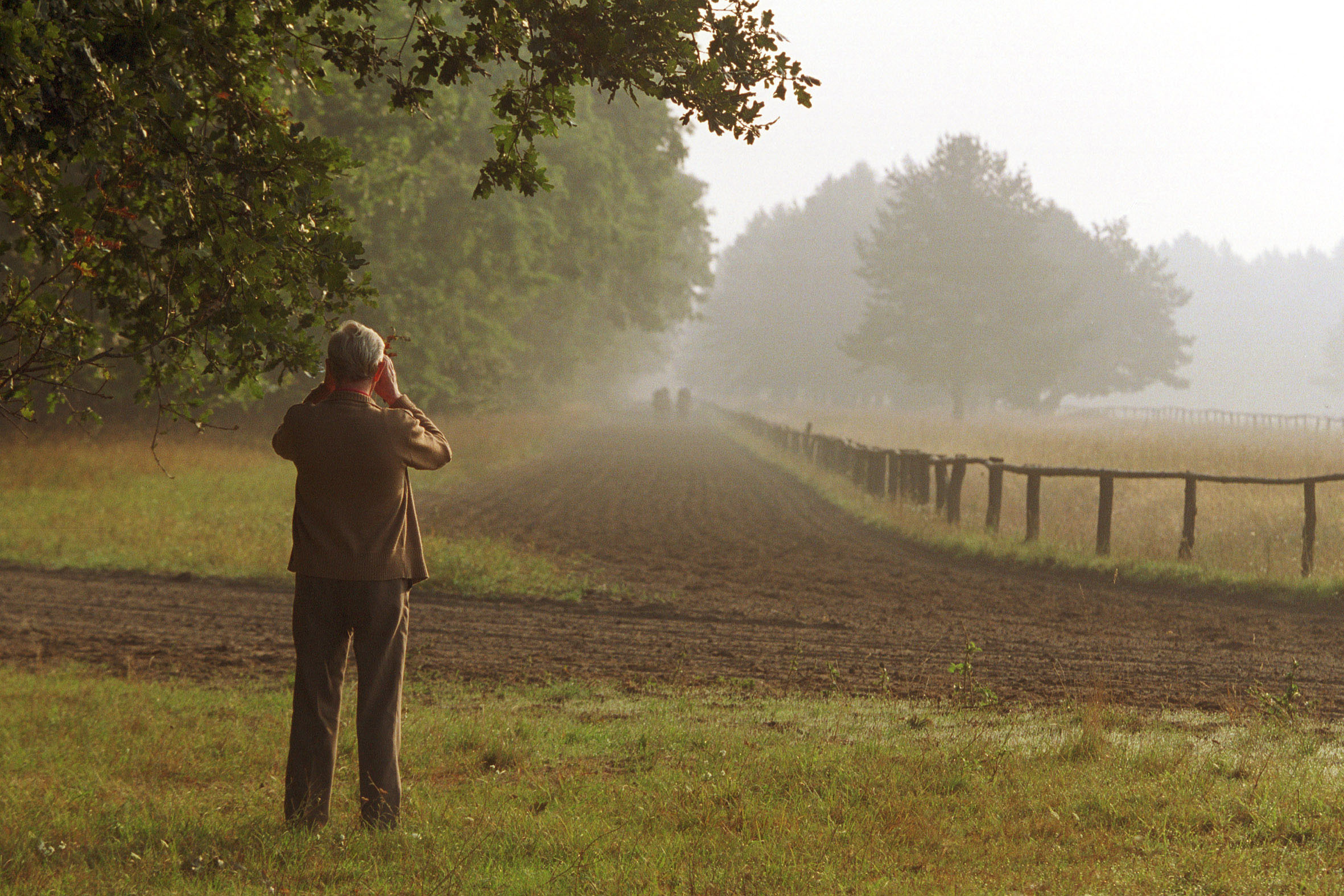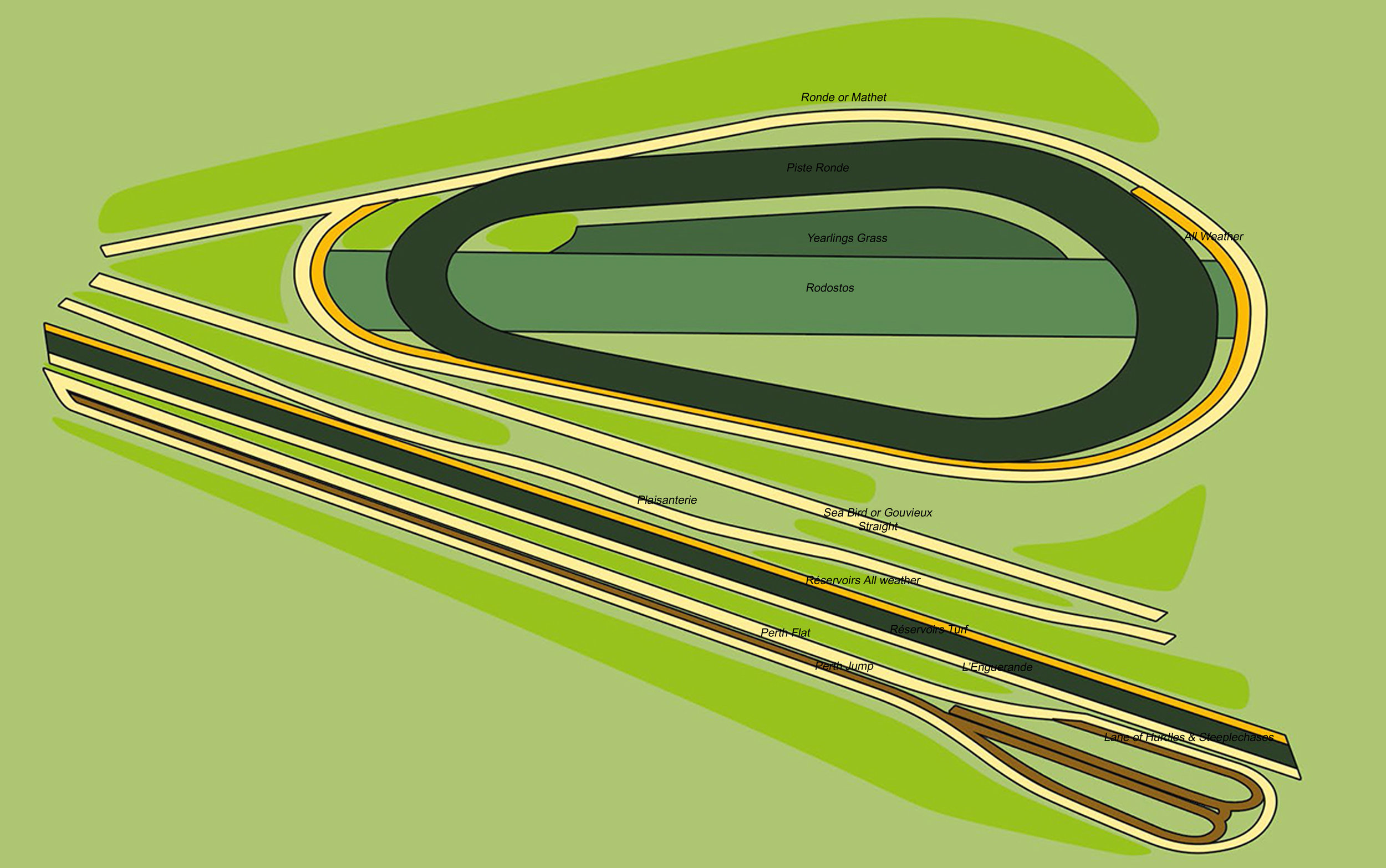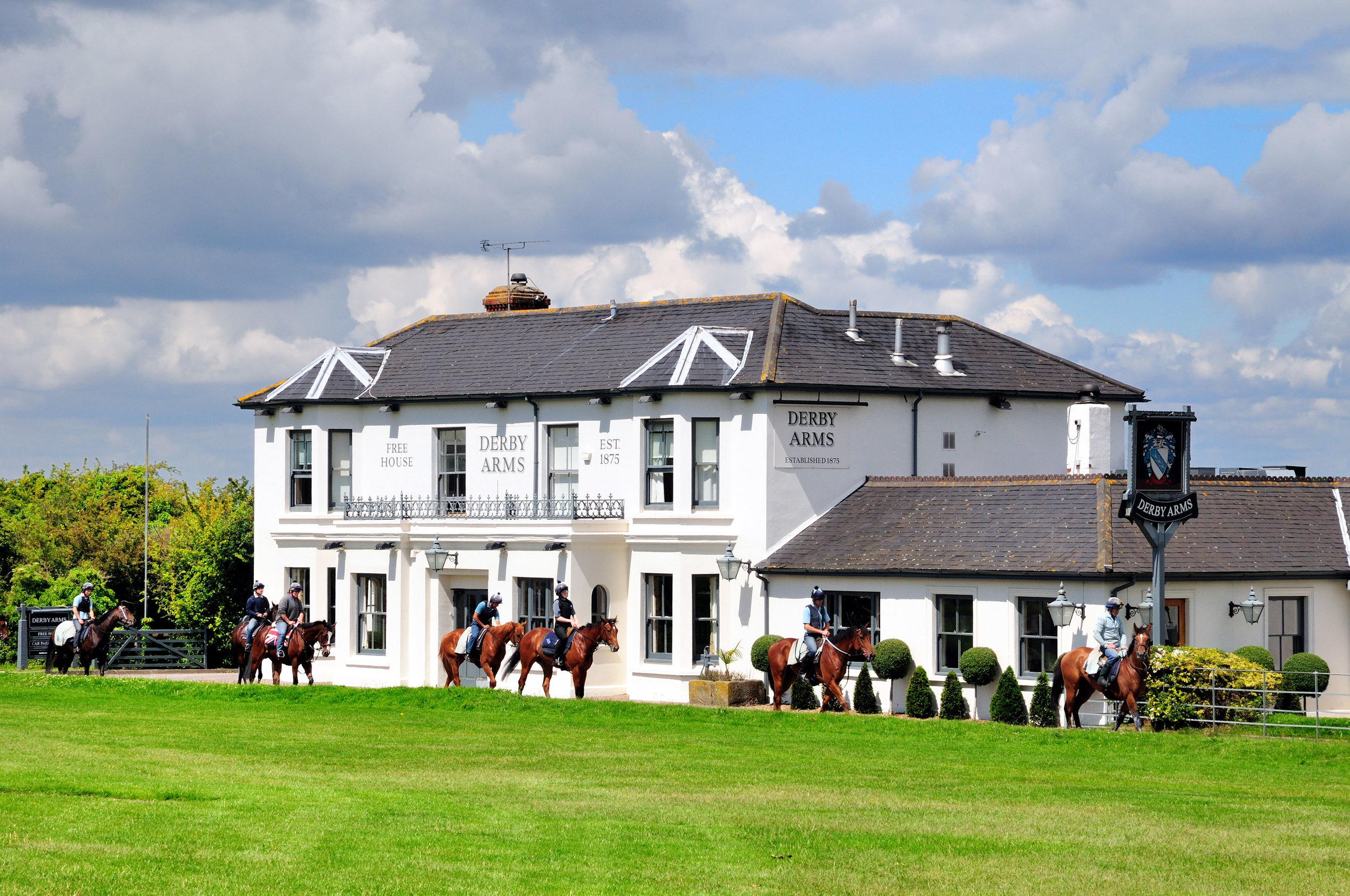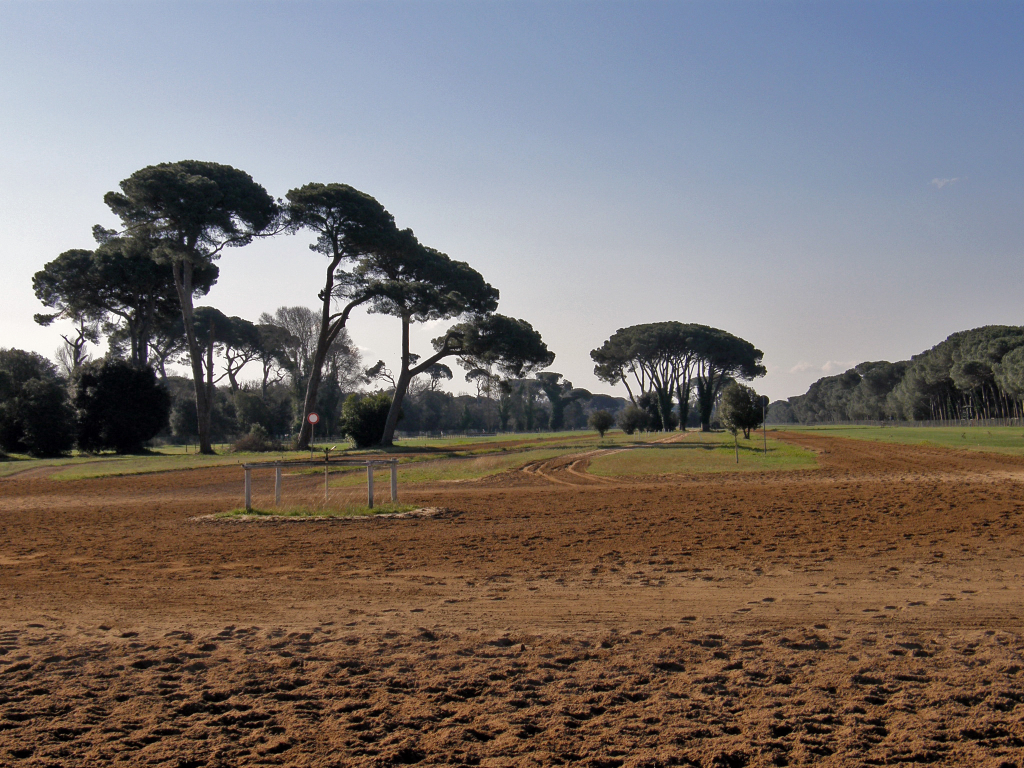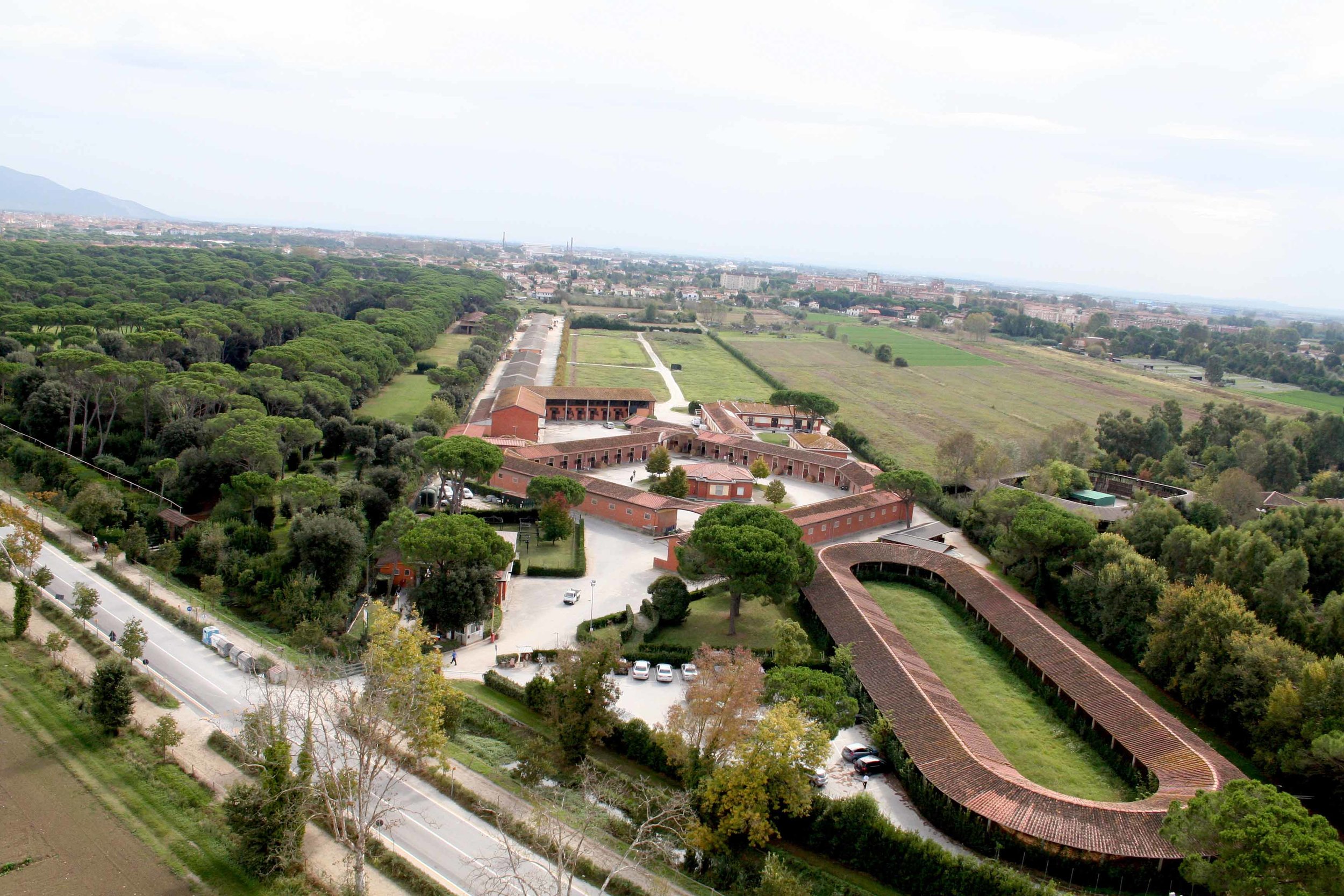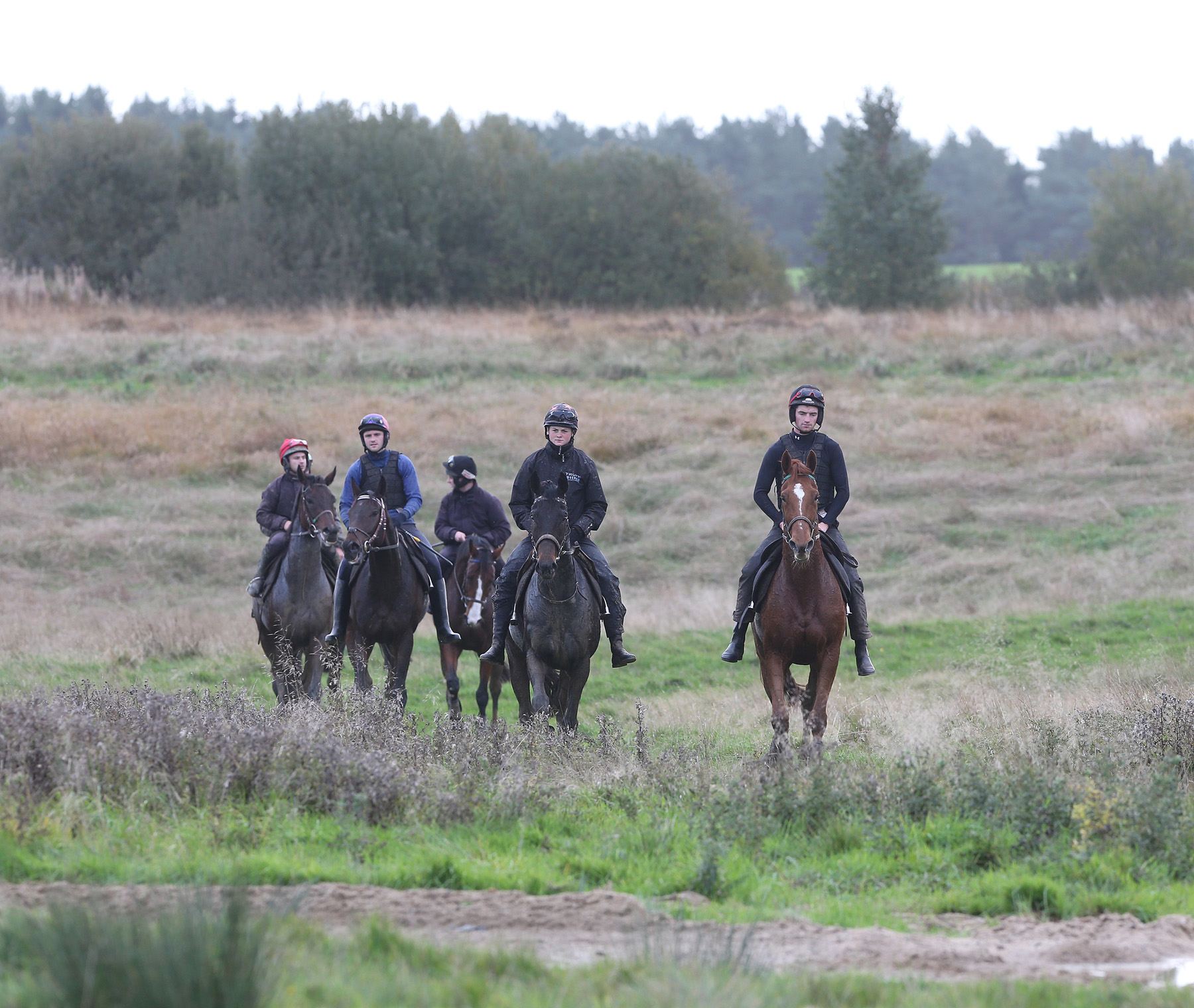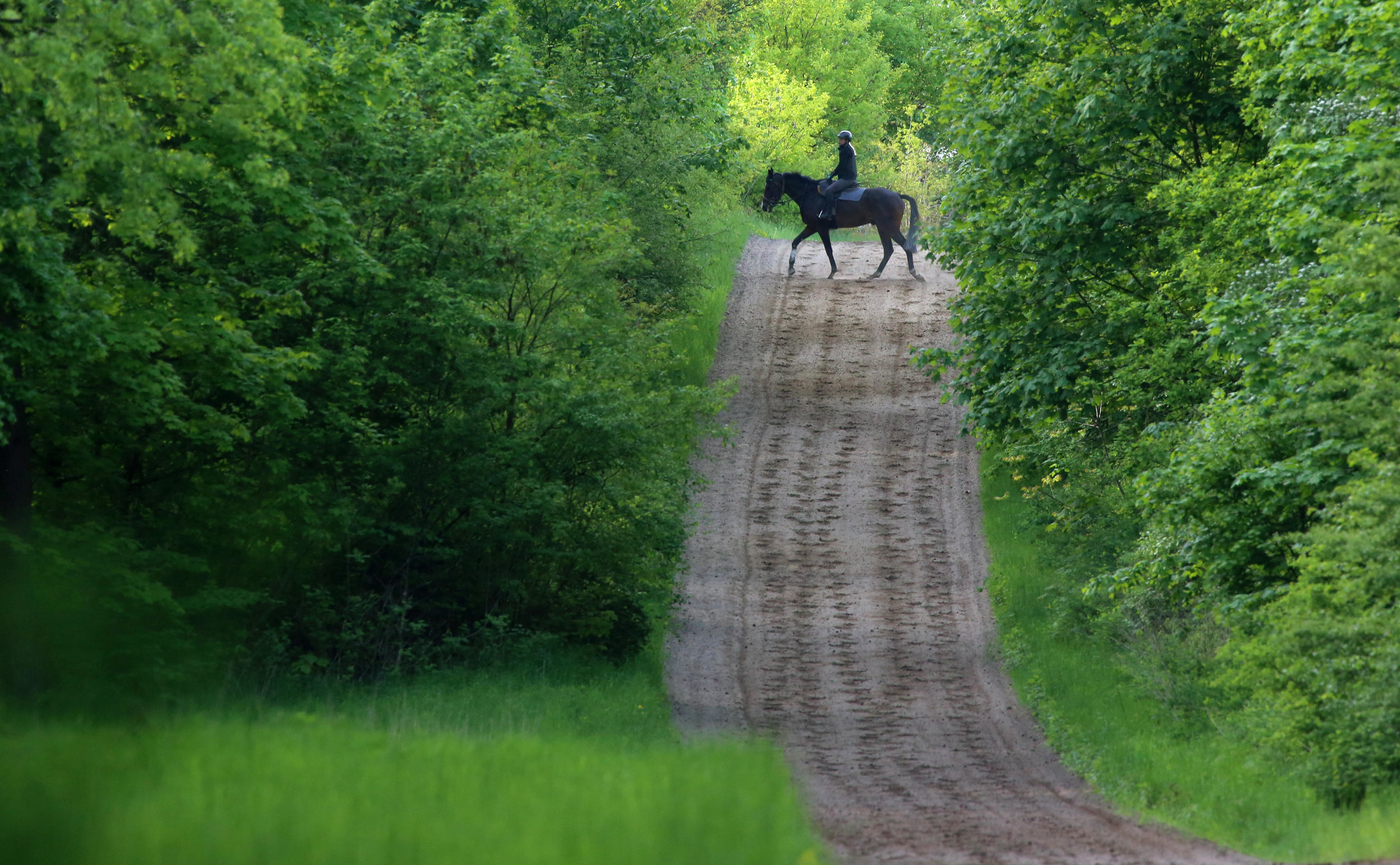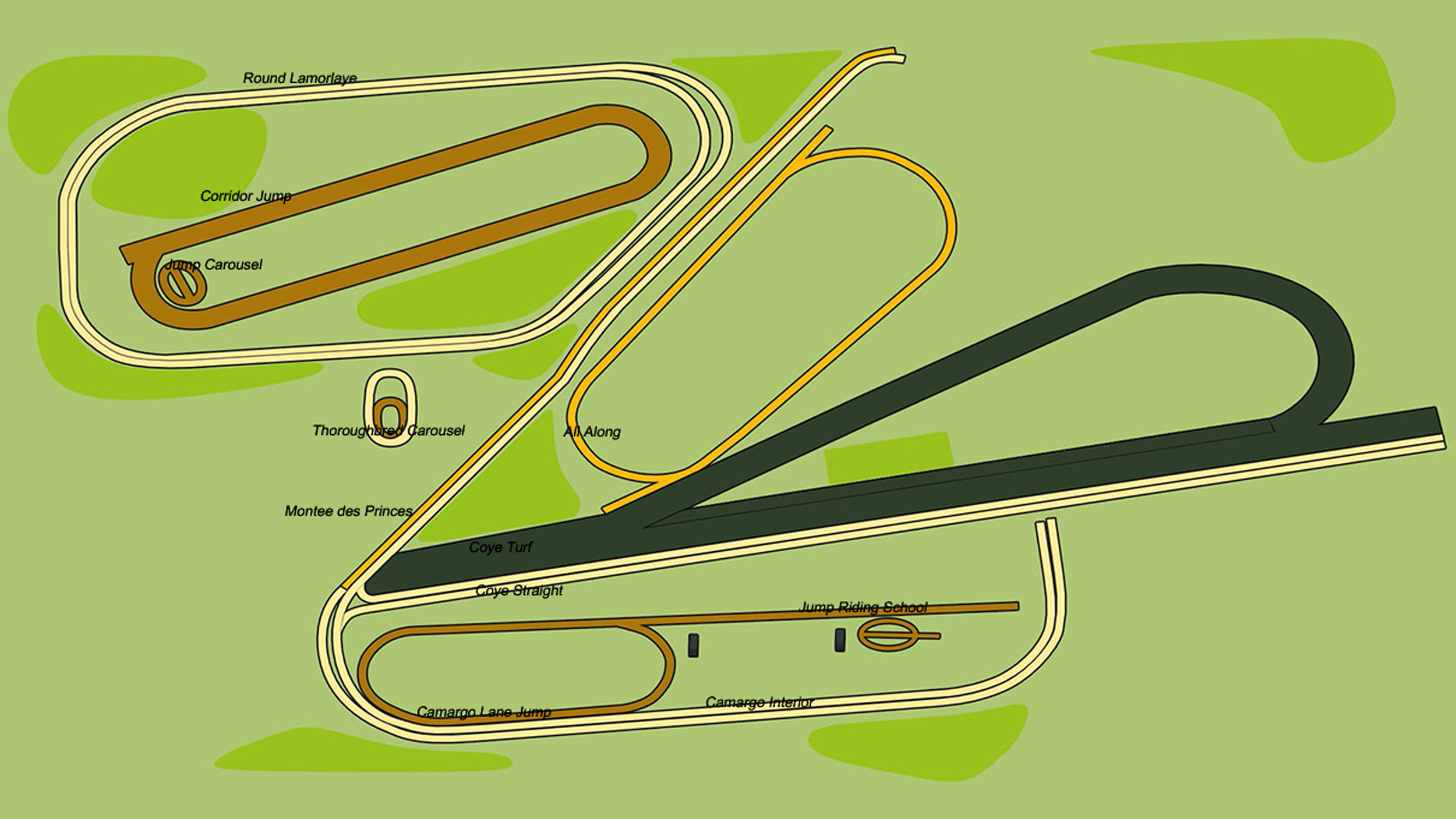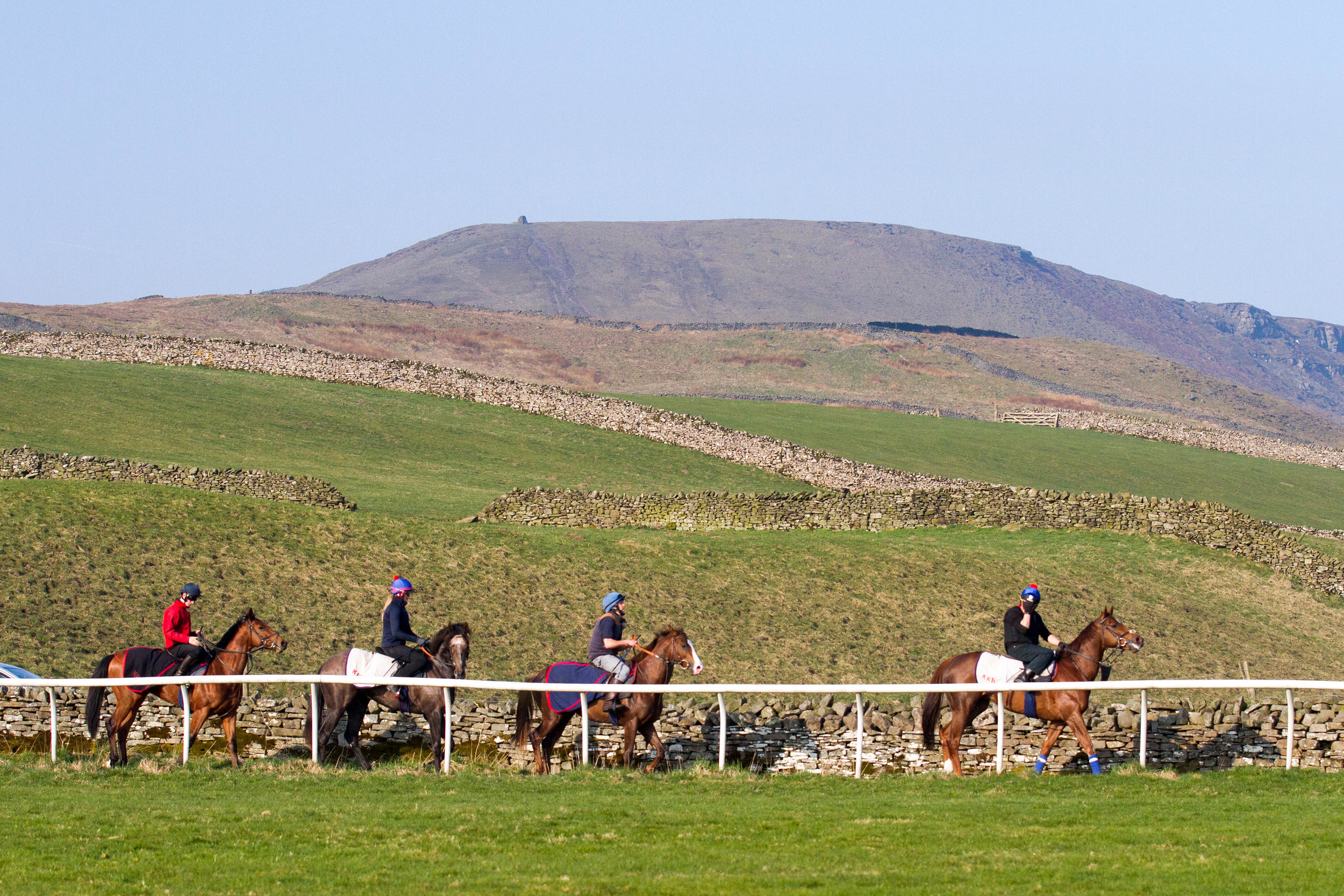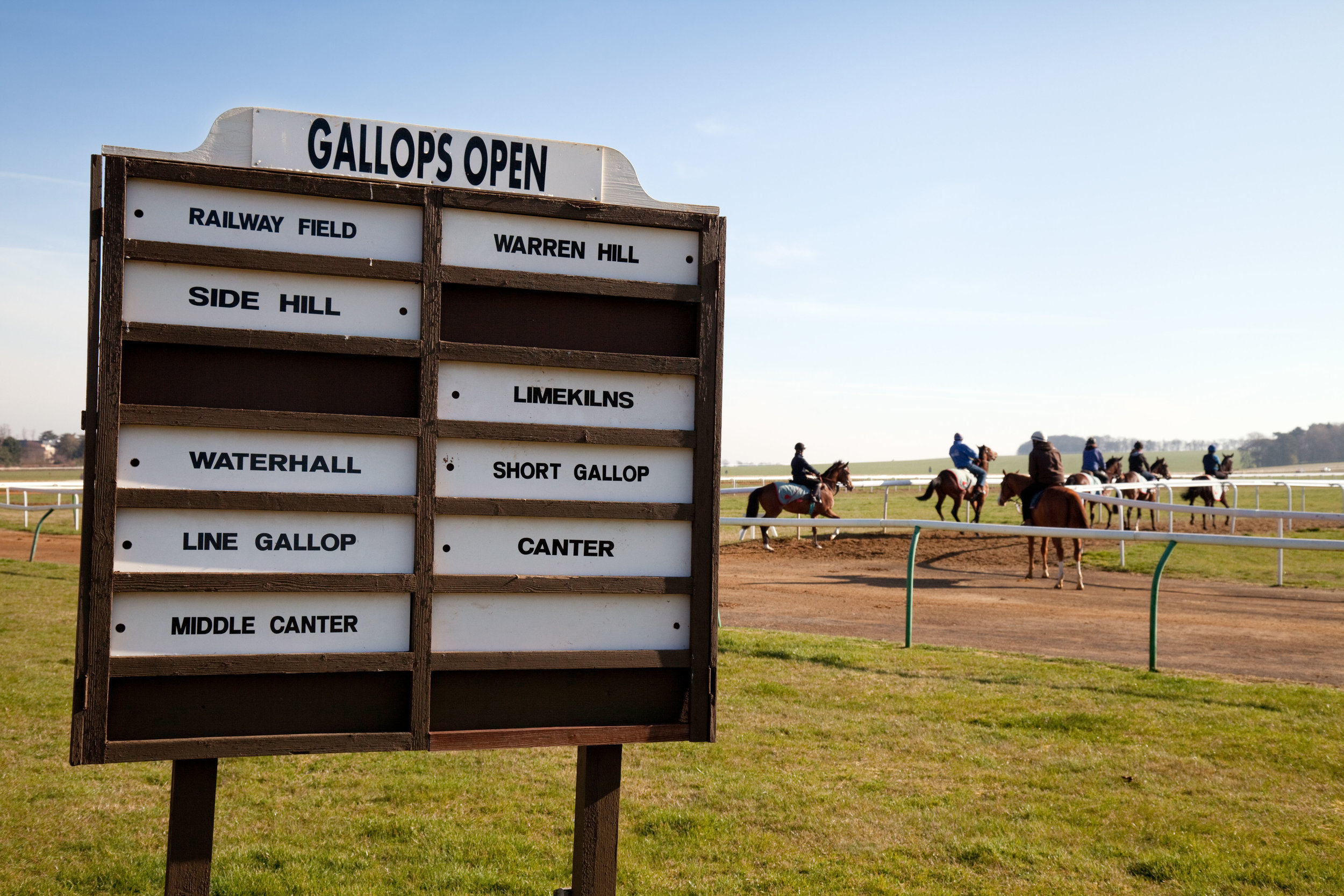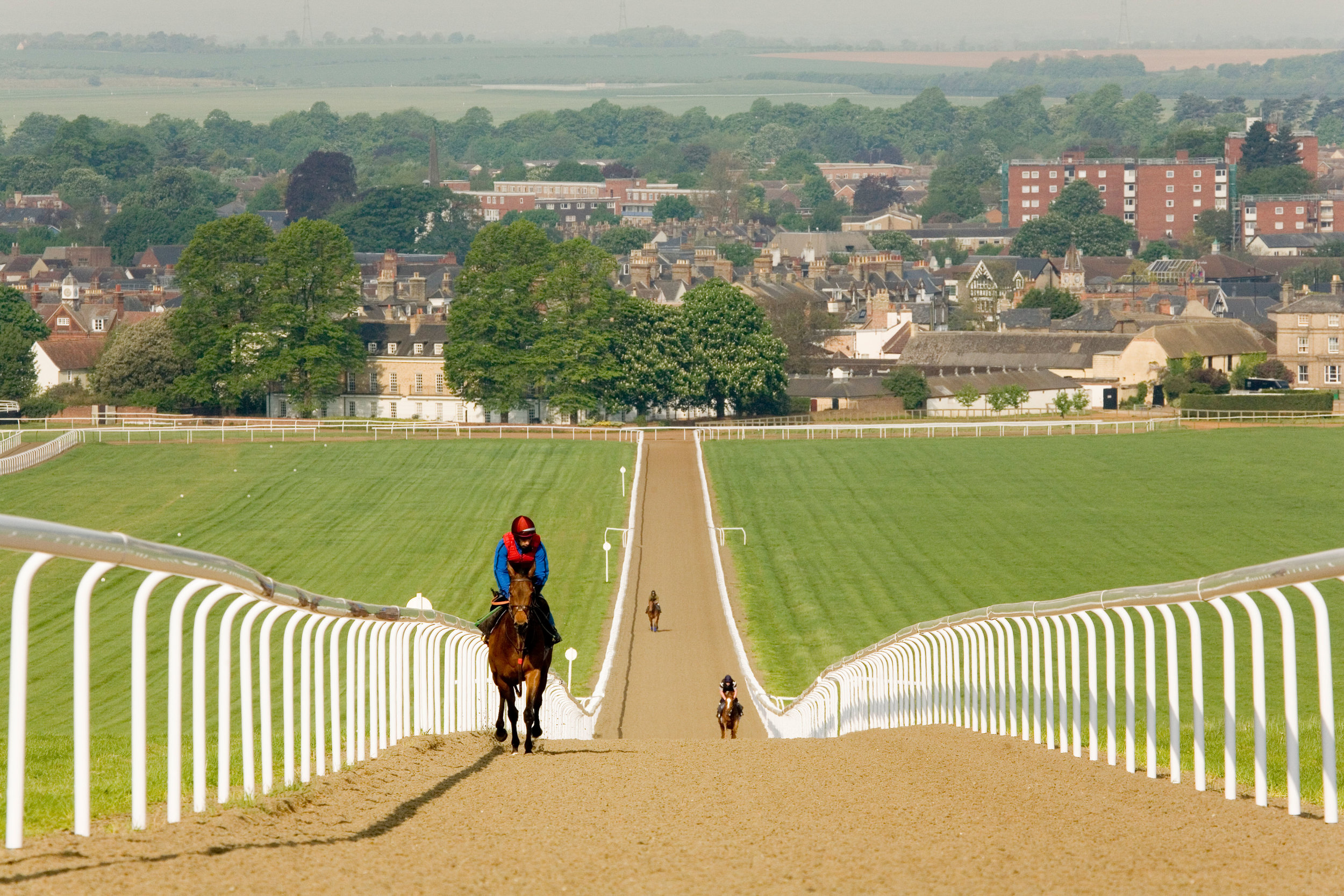On the bridle - scientific research uncovers performance advantages of different types of bridles - reducing bridle pressure
By Dr. Russell Mackechnie-Guire
Using a modified bridle design has a significant impact on whole horse locomotion–front and hindlimb–not just the head.
Recent scientific advances have seen an increase in performance-based research, particularly in the sport horse world where a podium finish can depend on the smallest of margins. The findings from the sport horse research can be translated to the racing thoroughbred where the shortest distance can put you first past the post. All items of training tack and equipment have found themselves under scientific scrutiny, with some unexpected results which could have significant effects on racehorse performance.
Perhaps one of the most surprising discoveries was the effect that bridle fit and design has on the locomotor apparatus of the horse (biomechanics). The bridle is a neglected item of tack which has, until now, received little scientific attention.
Ahead of the game
As well as improving locomotion these findings could have a significant benefit when it comes to resolving common issues affecting race performance, such as oral lesions in the commissures (corners) of the lips, tongue lolling and hanging, as well as steering or control issues.
A sensor mat was used under many different bridles and nosebands to measure and record pressure on the horse’s head in motion.]
Research indicates that these behaviours are likely to occur as a result of the horse seeking relief from bridle pressure and instability. Tongue ties or Australian nosebands are two examples of gadgets traditionally used to remedy these issues, but they have their own welfare and pressure-inducing concerns. A more effective solution would be to remove the primary cause of discomfort which leads to the negative or undesirable behaviour by using a modified pressure-relieving bridle design.
Pressure head
Research using a calibrated pressure sensor mat, which was positioned beneath all parts of the bridle, revealed interesting findings and disproved some long-held assumptions.
It had long been thought that horses experience bridle pressure directly on their poll. In contrast, the research team found no significant areas of pressure over the poll. Instead, areas of high peak pressure were located at the base of the ears in the region where the browband attaches to the headpiece. Anatomically this corresponds to the temporomandibular joint (TMJ). The TMJ is an essential part of the physiological apparatus, associated with the swallow reflex and the hyoid apparatus (see anatomy panel). The location of pressure (base of the ear and TMJ) was consistent in all commonly-used headpieces and occurred at the same moment in the stride, regardless of the make or design.
Important locomotor muscles are all linked to the mouth and tongue via the hyoid.
The research team also used gait analysis where markers are placed on the horse’s anatomical locations (joints), allowing locomotion to be measured. …
CLICK HERE to return to issue contents.
BUY THIS ISSUE IN PRINT OR DOWNLOAD
How girths have been scientifically proven to have an impact on performance
By Dr. Russell Mackechnie-Guire
Groundbreaking research has revealed the effect girths can have on the locomotion of the galloping racehorse.
Generally, whenever the subject of tack and equipment is discussed, the saddle is always the first, and possibly even the only, consideration. Recent scientific studies have revealed interesting findings relating to girth design and its association with gallop kinematics (movement). These findings could bring significant benefits for trainers—in terms of performance and equine health.
It seems the girth has the potential to be more influential and important than ever been imagined. Indeed, the girth’s impact on equine locomotion has been reported to be so great that authors of a study suggest the girth and its fit should be considered by a veterinarian when evaluating a horse for poor performance.
Thanks to advances in technology, we have enhanced our understanding of the physiological and biomechanical demands placed on the horse. This evidence-based knowledge is leading to progress in the development of race and exercise tack, allowing trainers to optimise benefits brought about by the design and fit of saddles and girths—benefits which have been quantified using scientifically robust principles and state-of-the-art measuring systems.
Pressure matters
The association between saddle pressures and back discomfort is a topical area within the equine literature. Studies have reported that a mean saddle pressure of more than 13kPa, or peak pressure of more than 35kPa, has the potential to cause ischemia—compression leading to soft tissue and follicle damage. This can result in the appearance of white hairs, muscle atrophy and skin ulcerations, with the potential to induce discomfort.
It has always been assumed that girth pressures are at their highest on the midline of the horse’s trunk, at the horse’s sternum (breastbone) where the girth passes over the bone. In a study investigating girth design on sport horse performance, researchers identified repeatable high pressures beneath the girth, but these pressures were actually located behind the elbow, not on the sternum. This also seems logical, given it is the location where girth galls and girth pain may appear.
Adapting technology previously used in saddle-based research, using a pressure mat with 256 individual pressure sensor cells, researchers were able to quantify the precise levels and exact location of actual pressures beneath the girth. For the first time, they were able to demonstrate how the pressure distribution changes during locomotion and show that the pressure peaks are directly associated with the timings of the gait.
Limb kinematics were quantified using a two-dimensional motion capture system. The combination of pressure mapping and gait analysis demonstrated that a girth designed to alleviate pressure, particularly in the region behind the elbow, resulted in an improvement in equine locomotion and the horse’s movement symmetry.
Two-dimensional motion capture is used to quantify improvements in gait.]
Speed increases pressure
The groundbreaking findings from the sport horse study sparked further investigation into racing thoroughbreds. It is accepted that high speeds are associated with higher pressures under the saddle and, applying the same principles to a girth, it was speculated that girth pressures may increase with an increase of speed.
In a recent experiment, researchers quantified girth pressures in a group of racehorses that were galloping on a treadmill at a standardised speed wearing commonly-used exercise girths. All girths were of the same length and tension. Just as in the sport horse study, increased girth pressures were identified behind the elbow in the galloping thoroughbred, with pressure peaks occurring when the forelimb opposite to the leading leg was in stance (see photo).
The moment in the stride when peak pressure is seen—the point where the musculature is trapped between the front of girth and back of leg.]
Although the location of pressure was consistent between sport horses and racehorses, the magnitude of the pressures recorded under commonly used race girths was dramatically higher—and far higher than had been reported in any previous saddle study. The girth pressure mat was calibrated to manufacturer’s guidelines at a maximum of 106kPa, but in the racehorse study pressure values for a galloping horse wearing a regular girth peaked out above the highest calibration point. It was not possible to estimate the exact magnitude of girth pressure, but it is worth noting that 106kPa is already three times the peak pressure reported to cause capillary damage and discomfort beneath a saddle.
Pressure under a straight girth on a horse galloping on a treadmill was higher than the pressure mat could record.
In the second part of the experiment, the same horses were galloped over-ground in order to quantify gallop kinematics and determine if there was any change when girth pressures were reduced. Data demonstrated that a modified girth, designed to avoid areas of peak pressures, significantly improved the horse’s locomotion at gallop with increased hock flexion, hindlimb protraction and knee flexion.
Space to breathe
Girth pressures are also thought to have an influence on the horse’s capacity to breathe efficiently. One study demonstrated a relationship between increased girth tension and a reduced run-to-fatigue time on a treadmill, indicating that girths can affect the breathing apparatus of the galloping horse.
The more recent girth pressure study also identified a relationship between peak pressures in a normal girth and breathing. This study didn’t quantify respiration rate, but visual observation of the pressure mat data indicated a peak pressure on inhalation. When the horse was wearing the modified girth, the pressure spikes (speculated to be related to the intake of breath) were no longer evident.
It has been reported that the equine rib cage has a limited range of expansion directly where the girth sits. The shape and fit of the modified girth design reduces pressure from the intercostal muscles and therefore does not hinder the rib cage’s naturally occurring expansion.
The girth pressure studies in sport horses and racehorses suggest that muscle function could be highly significant in relation to the time it takes a galloping horse to fatigue.
Muscles need to contract in order to work effectively. If pressure from the girth negatively affects muscle activity, this could result in restricted function and limit the limb’s full range of motion. Subsequently, the muscles may have to work harder and, if they are required to work harder, may fatigue faster.
When scientific evidence shows that commonly used girths are compromising muscle function and restricting breathing during galloping, the advantage of the modified design becomes obvious.
Not so fantastic elastic
One anecdotal belief is that girths modified with elastic inserts offer some form of pressure relief, allowing the horse’s rib cage to expand, therefore enhancing instead of hindering breathing mechanics. However, in the sports horse research, adding an elastic component to the end of the girth did not result in increased locomotion or any alteration in pressure distribution beneath the girth. In contrast, the addition of the elastic decreased the stability of the saddle. Furthermore, new elastic girths can provide up to six inches of stretch and, as a result, are easy to over-tighten. With daily use, the elastic component of the girth weakens over time, losing its elastic properties and stretching. From a safety viewpoint, where elastic girths are being used in race training, routine checks of the stitching and elastic strength are crucial.
Anticipated pain and ulcers
In practice, without the use of sophisticated measuring systems and in the absence of skin ulcers, girth pressures will largely go undetected. However, behaviour when being tacked up, particularly when the girth is being done up, can be indicative of girth-related pain and discomfort.
Similar to humans anticipating pain, horses increase cortisol and gastric acid production, leading to gastric irritation. For horses that already have clinical signs of ulcers, this, combined with excessively high girth pressures in excess of 106kPa behind the elbow at gallop, is likely to lead to increased discomfort. As a result, health and performance are likely to be compromised.
The use of a pressure-relieving girth may be an effective tool when used as part of a multidisciplinary approach in supporting horses undergoing treatment and management of ulcers. If pressure-related discomfort is eliminated, it seems likely that the anticipation of, and response to, pain will be reduced over time.
The area of peak pressure (shown in red) caused by a straight girth is avoided by the cutaway shape of the modified girth.
The research performed on the treadmill demonstrated that a straight girth created areas of high pressures in excess of 106 kPa behind the elbow, on muscles that are vital for locomotion and respiration. …
BUY THIS ISSUE IN PRINT OR DOWNLOAD —
WHY NOT SUBSCRIBE?
DON'T MISS OUT AND SUBSCRIBE TO RECEIVE THE NEXT FOUR ISSUES!
How technology can quantify the impact saddles have on performance
By Dr. Russell Mackechnie-Guire
Thanks to advances in technology, it is getting easier for scientists to study horses in a training environment. This, combined with recent saddlery developments in other disciplines, is leading to significant progress in the design and fit of exercise saddles.
Back pain, muscle tension and atrophy are common issues in yards. Although there are many contributory factors, the saddle is often blamed as a potential cause. Unlike other equestrian sports, where the effect of tack and equipment on the horse has been investigated, until now there has been little evidence quantifying the influence of exercise saddles.
New era
The technological advances used in sport horse research are sparking a new era in racing, enhancing our understanding of the physiological and biomechanical demands on the horse, and helping improve longevity and welfare. For the trainer this translates into evidence-based knowledge that will result in marginal or, in some cases, major gains in terms of a horse’s ability to race and achieve results. Race research has always been problematic, not least due to the speed at which the horse travels. Studies have previously been carried out in gait laboratories on treadmills, but this is not representative of normal terrain or movement. Thanks to new measuring techniques, we can now study the horse in motion on the gallops. Evidence of this new era arises from a recent study published in the Journal of Equine Veterinary Science. It found areas of high pressures under commonly used exercise saddles which had a negative influence on back function, affecting the horse’s gallop and consequently performance.
The pressure’s on
Researchers used a combination of pressure mapping and gait analysis (see Technology in focus panel) to investigate three designs of commonly used exercise saddles: full tree, half tree and three-quarter tree. The aim was to identify pressure magnitude and distribution under each of the saddles then to establish whether the gait (gallop) was improved in a fourth saddle designed to remove these pressures.
Areas of high pressure were found in the region of the 10th-13th thoracic vertebrae (T10-T13). Contrary to popular belief, none of the race exercise saddles tested in this study produced peak pressure on or around the scapula. The pressures around T10-T13 at gallop in the half, three-quarter and full tree were in excess of those detected during jumping or dressage in sport horses. They were also higher than pressures reported to be associated with clinical signs of back pain. Therefore, it is widely accepted that high pressures caused by the saddle could be a contributory factor to back pain in horses in training.
Three most commonly used saddle-tree lengths, plus the new design (purple 40cm)
Half tree: High peak pressures in the region of T10-T14 were consistent with the end of the tree.
Three-quarter tree: Peak pressure was localised on one side of the back at a time, depending on the horse’s gallop lead.
Full tree: Peak pressure was further back and, although not high, gait analysis demonstrated a reduction in the extent to which the hindlimb comes under the horse, reducing the power in the stride.
New design: A more uniform pressure distribution, recording the lowest peak pressures at each location.
Lower pressure leads to longer strides
When looking at propulsion, there are two important measurements: the angle of the femur relative to the vertical and hip flexion. When pressures were reduced beneath the saddle, researchers saw an increased femur-to-vertical angle in the hindlimb and a smaller hip flexion angle (denoting the hip is more flexed).
A greater femur-to-vertical angle indicates that the hindlimb is being brought forward more as the horse gallops.
A smaller hip flexion angle denotes the hip is more flexed, allowing the horse to bring his quarters further under him and generate increased power.
Improved hip flexion was recorded in the new saddle design (A) compared to a commonly used saddle (B).
When pressure is reduced in the region of T13, the hindlimb is allowed to come more horizontally under the horse at this point in the stride, leading to an increase in stride length. Researchers speculate that this could be due to the fact that the thorax is better able to flex when pressure is reduced.
Perhaps surprisingly, the study found that reducing saddle pressures did not result in any significant alteration in the forelimb at gallop. The major differences were recorded in hindlimb function. This could be explained anatomically; the forelimb is viewed as a passive strut during locomotion, whereas the hindlimbs are responsible for force production.
This is consistent with findings in the sport horse world, where extensive research investigating pressures in the region of the 10th-13th thoracic vertebrae has shown that reducing saddle pressure is associated with improved gait features in both dressage and jumping.
Speed matters…
BUY THIS ISSUE IN PRINT OR DOWNLOAD
WHY NOT SUBSCRIBE?
DON'T MISS OUT AND SUBSCRIBE TO RECEIVE THE NEXT FOUR ISSUES!
Are we going soft on our horses?
By Amy Barstow
Over the years there has been a steady move away from traditional concrete surfaces in yards towards surfaces that are generally considered softer, such as rubber. Furthermore, in some areas, the surfaces of the tracks which link yards with training facilities (horse walks) have also moved towards ‘softer’ surfaces. This has led some to wonder if our horses are missing out on a key opportunity to condition their musculoskeletal system. This article will explore what the scientific research tells us about how different surfaces affect the horse and what this might mean for musculoskeletal conditioning and injury resistance.
The majority of the research that has highlighted the links between surfaces and injuries is from epidemiology studies. These studies view large populations of horses and pull together lots of different factors to elucidate risk factors for injury. They, therefore, do not attempt to investigate why surfaces may be implicated as a risk. To understand the link between surface and injury risk, other types of research must be done including biomechanics studies, lab-based studies on bone and tendon samples and prospective experimental studies. Biomechanics studies explore how the horse, especially their limbs and feet, move on different surfaces and the forces and vibrations that they experience. Lab-based work investigates how musculoskeletal tissues respond to loading and vibrations at the cellular and extracellular level. Prospective experimental studies take a group of horses and expose them to different environments (e.g., conditioning on different surfaces). Then you compare the groups, for example, looking for signs of musculoskeletal injury using diagnostic imaging techniques. The research done using these different techniques can then be pieced together to help us decide how to better manage the health and performance of racehorses.
There is a wealth of epidemiological data to suggest that the surface type and condition during racing influences the occurrence of musculoskeletal injuries in the racehorse. Though it must be remembered that musculoskeletal injury is multifactorial with training regimens, race distance, the number of runners, horse age and sex all coming into play. Though there are comparably fewer data available relating to the effect of training surface type and properties on musculoskeletal injury rates, what is available also suggests that firmer surfaces increase the risk of sustaining an injury either during training or racing. For example, horses trained on a softer, wood fibre surface are less likely to suffer from dorsal metacarpal disease (bucked shins) than those trained on dirt tracks. However, horses trained on a traditional sand surface have been shown to be at a greater risk of injury (fracture) during racing. This could be due to the soft sand surface not stimulating sufficient skeletal loading to adequately condition the musculoskeletal system for the forces and loading experienced during racing. It could also be the result of horses racing on a surface with very different properties to those that they trained on.
So far the majority of the scientific research discussed relates to horses galloping and cantering, which are not the gaits that they will generally be using around the yard or getting to and from the gallops. There is very little work to link sub-maximal (low) speed exercise on different surfaces to injury in horses. In a small group of Harness (trotting) horses, those trained on a softer surface had a lower incidence of musculoskeletal pathology identified using diagnostic imaging techniques, compared to those trained on a firm surface. There is also evidence of the benefit of softer surfaces in livestock housing. Experimental work by Eric Radin in the 1980s found that sheep kept on a concrete floor compared to a softer dirt floor had more significant orthopaedic pathologies at postmortem. Furthermore, the use of rubber matting reduces the incidence of foot lameness in dairy cattle. So it would appear that a softer ground surface is beneficial even at sub-maximal intensity locomotion.
The epidemiological data discussed so far tells us that surface can play a role in injury, but it does not provide any answers for why that may be the case. From a veterinary and a scientific perspective, I am interested in how different surfaces influence limb vibration characteristics and loading in horses. …
TO READ MORE —
BUY THIS ISSUE IN PRINT OR DOWNLOAD
WHY NOT SUBSCRIBE?
DON'T MISS OUT AND SUBSCRIBE TO RECEIVE THE NEXT FOUR ISSUES!
Tech advances - opportunities for trainers
By Alysen Miller
From heart rate monitors to GPS trackers, smart treadmills to light masks and even Artificial Intelligence, a plethora of new technologies has breezed onto the market in recent years, all claiming to offer trainers an edge in a sport where every pixel in a photo finish counts. And it’s not just on the gallops where their impact is being felt; everywhere from the barn to the breeding shed, a raft of new gadgets is quietly powering a technological revolution that has the power to reshape the racing industry. So in this brave new world, how do trainers ensure that they are exploiting every possible technological advantage at their disposal in their quest to leave no margin left ungained?
The reality is that, in an increasingly data-driven world, racing has been ironically slow to catch on to technologies that have already become mainstream in sports ranging from running to cycling. Every MAMIL (middle-aged man in lycra) worth his electrolyte gel has his own GPS tracker fitted to his carbon fibre bike. Now, companies such as Arioneo and Gmax are helping the racing industry catch up to the peloton by providing real-time exercise data, allowing trainers to track horses’ speed, cadence, sectional times and stride length, as well as heart rate and other biometrics using a device fitted to the horse’s girth. These data are then fed back to an app, allowing every aspect of the horse’s work and recovery to be assessed.
Lambourn-based husband and wife team Claire and Daniel Kübler were easily adaptable to the cause. “We did a lot of research when we started training, going, “OK, what’s out there to actually put a bit more science behind what people do”? There’s so much data, so the more you can have, the better decisions you’re going to make”, explains Claire. “I started graphing out the data that we gathered, looking at frequency of stride to see where horses [and trip] correlate. It has actually helped to pinpoint when a horse does want a distance or it when it wants dropping back to a more speed trip. So it was really useful to help decide which way to go”.
Horse wearing a heart rate monitor and GPS tracker.
Armed with a degree in Natural Sciences from Cambridge University, Kübler realised that the concept of marginal gains (European Trainer - December 2015 - issue 52) was as relevant to the racing industry as it was to other sports. Popularised by Sir David Brailsford—the erstwhile head of British Cycling and latterly doyen of professional cycling behemoth Team Ineos (formerly Team Sky)—the theory of marginal gains states that if you break down every element you can think of that goes into the performance of an athlete, and then improve each element by 1%, you will achieve a significant aggregated increase in performance.
“The optimum is getting 100% out of a horse. But for us, every little bit of marginal gain can hopefully get the most out of each individual”,
Artificial Intelligence (AI) may conjure images of a dystopian future, but it is already being used in technologies available to trainers in the United States and Canada. Billed as the world’s first ‘smart halter’, or headcollar, Nightwatch was developed by Texas-based Protequus to monitor horses while they are in their stables overnight. “Unlike a lot of other wearables, this technology is based on an AI platform, which means that it learns every animal’s unique physiology and looks for deviations in that physiology that correlate with pain or distress and will send a text, phone and email to you so you can intervene at the earliest signs of a possible problem”, says the company’s Founder and CEO, Jeffrey Schab. The company is aiming to make Nightwatch available to European consumers by 2020.
If the worst does happen, a host of companies are harvesting the latest tech to aid in pain management and rehabilitation. Among these is the ArcEquine, a wearable brace that delivers a microcurrent to aid in the repair of soft tissue injuries by increasing levels of Adenosine Triphosphate (ATP) within affected cells. While the benefits of water therapy and treadmills have long been recognised by trainers, the latest gadget from ECB is a smart water treadmill that essentially functions as a Fitbit for horses. Not only does it incorporate salt- and cold-water functions as well as an incline feature, the treadmill comes with a built-in computer that allows the user to set programmes for particular horses, while feeding this data back to a phone or tablet for analysis. “By playing around with speed, water depth and incline, you can target specific muscles, control the heart rate, dictate the horse’s stride length and work on the horse’s straightness,” says Richard Norden, sales and marketing manager.
Elsewhere, scientists are working on ways to help increase athletic performance even when a horse is resting. Dr Barbara Murphy, Head of Equine Science at University College Dublin, has pioneered the use of light therapy on racehorses. Her smart lighting system mimics the effects of natural daylight by exposing horses to the correct spectral intensity of light to synchronise their internal clock. This has been shown to have performance-enhancing benefits, as well as increasing reproductive efficiency in broodmares. Essentially, natural daylight has a high amount of blue, short wavelength light. This blue light targets special photoreceptors in the eye that stimulate the circadian control centre in the brain, boosting activity, metabolism and alertness.
“When we consider that horses have evolved outdoors under natural photoperiods, they received high intensity blue-enriched light by day, then the sun goes down and they experienced un-interrupted darkness at night. These continuous fluctuating light-dark cycles maintained their strong body rhythms. In contrast, when we stable horses in a box for up to 22 hours a day, it’s really important that we give them the light stimulus that allows their body to work as best as it can,”explains Murphy. Her company, Equilume, offers stable lighting systems and futuristic-looking light masks that shine low-level blue light directly into the horse’s eye. While the importance of correct lighting is only just beginning to be understood, it should not be underestimated, according to Murphy. “We spend so much money on nutrition, training surfaces and veterinary care, [but] the single environmental cue that makes everything work in synchrony in the horse’s body is the light that they receive through their eyes. Temperature and food plays a role, but it doesn’t play as important a role as light. So by improving lighting we can ensure that horses get better value out of their feed, out of their training, out of all other aspects of their management.”
It is not only in the area of performance that technology is playing a role. Programmes such as Stable IT and Equine Medirecord help trainers achieve gains at the margins through maximising efficiency. “The last thing you want to be dealing with is paperwork”, says Pierce Dargan, founder of Equine Medirecord. “Especially paperwork that, if you get it wrong, you can get fined and end up in the papers, or even get criminally prosecuted”…
TO READ MORE —
BUY THIS ISSUE IN PRINT OR DOWNLOAD
WHY NOT SUBSCRIBE?
DON'T MISS OUT AND SUBSCRIBE TO RECEIVE THE NEXT FOUR ISSUES!
State-of-the-art training facilities come to China
By Sally Duckett
The dream for many trainers is to be based at a top-class state-of-the-art training centre with wonderful gallops, leading rehabilitation facilities, top-class staff accommodation as well as an ambitious site owner prepared to establish the facility as the very best of the best. For nine Hong Kong-based trainers, that dream has come true.
In August 2018, an eight-year project conceived by the Hong Kong Jockey Club (HKJC) came to fruition with the opening of its Conghua racecourse and training centre in China.
There is the slight downside for Sha Tin-based trainers, as the centre is a four-hour drive away from their main Hong Kong stables—across the border and in China. But every possible negative that it might have caused has been mitigated by the HKJC through discussion, cooperation with the Chinese authorities, big-planning, alongside the focused use of technology and ambitious ideas.
Nine trainers were invited to send horses to Conghua last autumn, and each has a string of between 15 to 20 horses based at the 150-hectare site—the trainers now termed ‘dual-site trainers’. Currently around 150 horses are in training at the €377 million facility, although by December 2018 the number of horses who had shipped to Conghua, returned to Sha Tin and travelled to China had already exceed 500 individuals.
The trainers were fully involved with the design and planning of Conghua from outset; the racecourse and gallops are in fact a replica of Sha Tin. Ensuring that the daily work and training processes are exactly the same, methods honed in Hong Kong can merely be picked up and transferred to China. There is though, at the trainers’ request, an additional 5f uphill straight gallop.
Selected trainers were invited to trial the Chinese venture and were chosen on their own abilities and that of their staff. The HKJC wanted to ensure that stable staff sent to China were capable and experienced.
The nine trainers with horses on site include leading trainers John Size, John Moore, Danny Shum, Casper Fownes and Tony Cruz.
All have been successful back in Hong Kong with their Conghua-trained horses (which are identified as such in the media for the betting public); and the Sha Tin nine are kept fully abreast of the training at Conghua courtesy of video, timing facilities and real-time technology all provided by the HKJC. The trainers, however, can spend as much time as they wish in China.
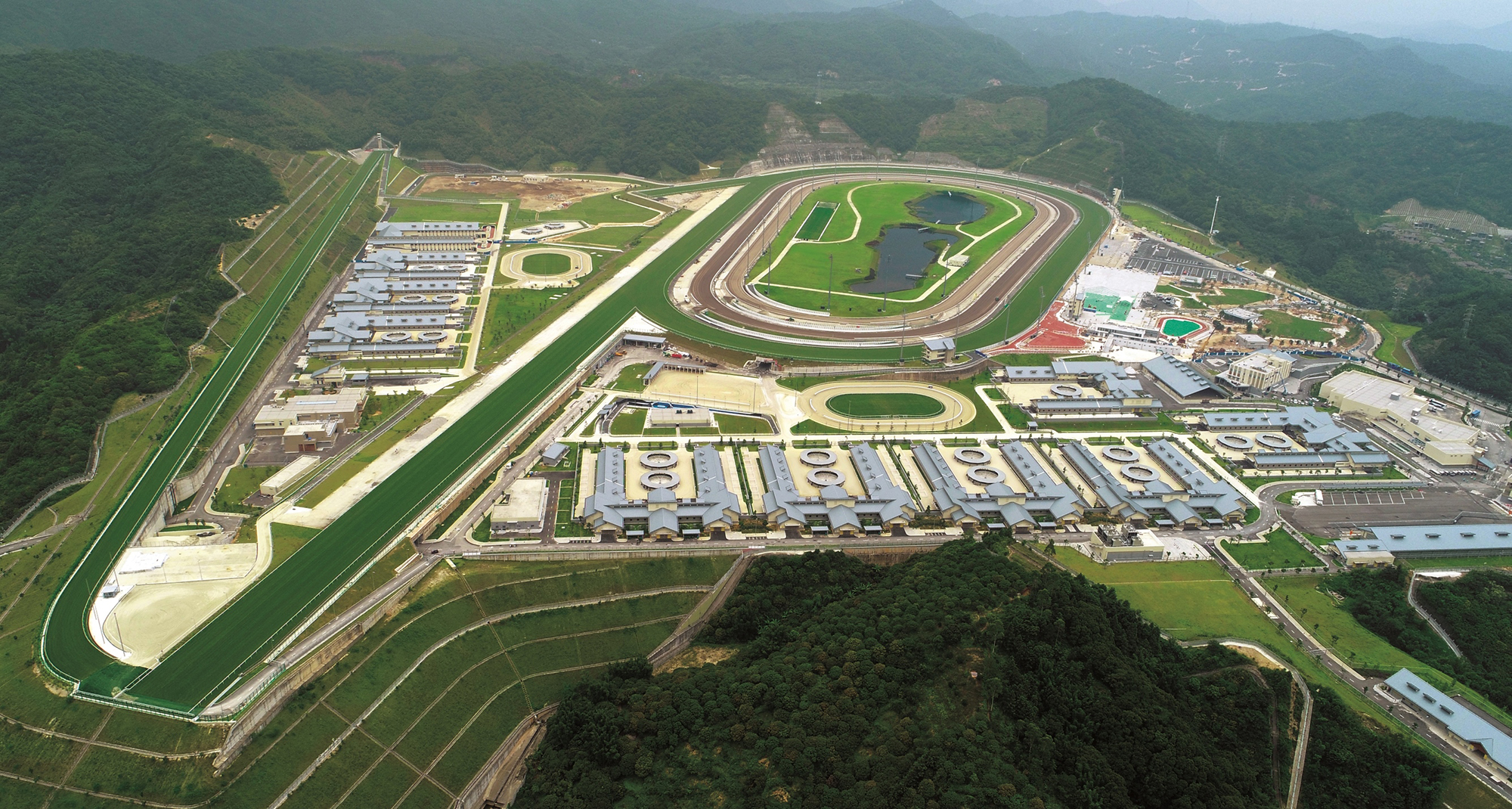
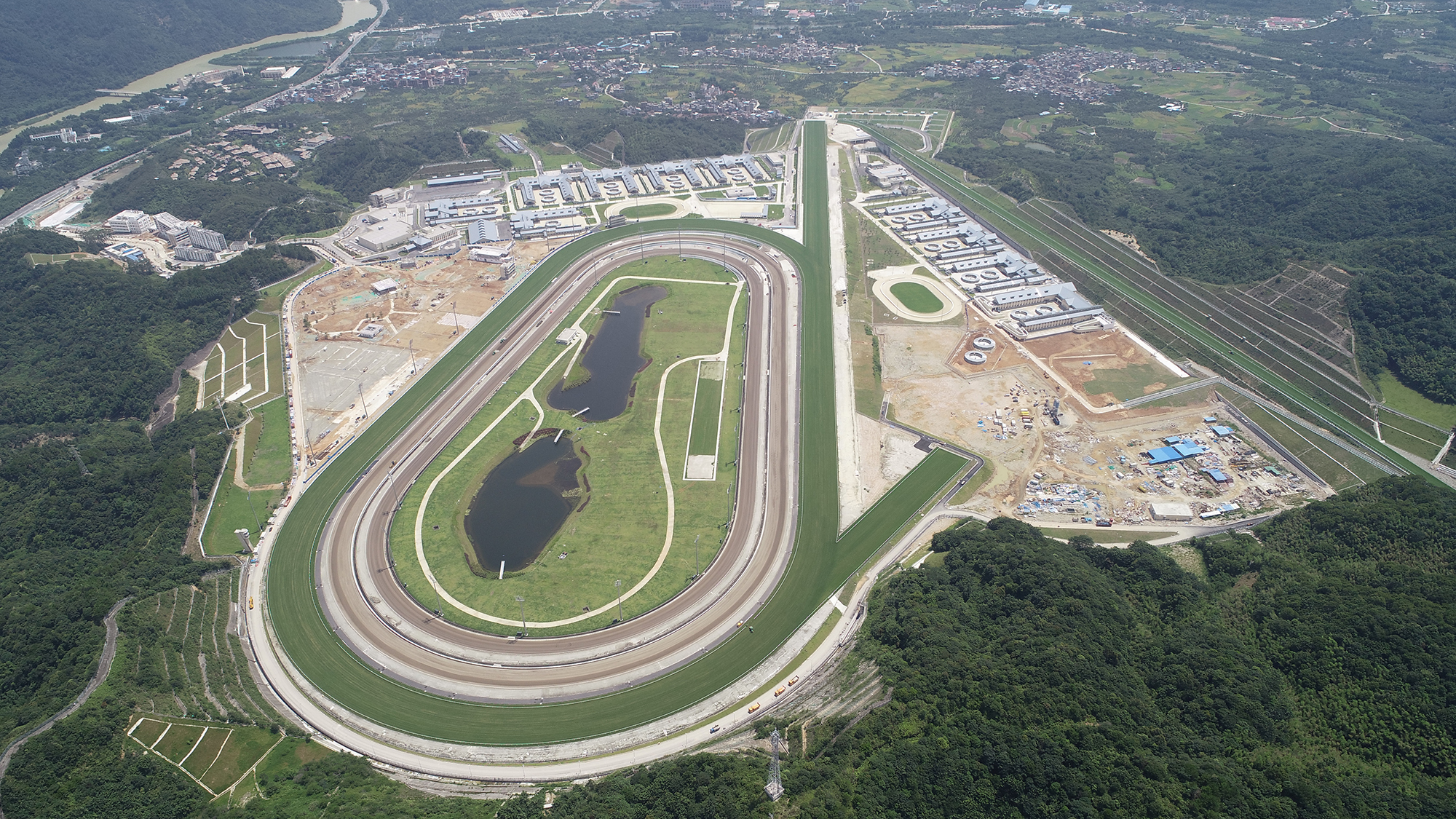
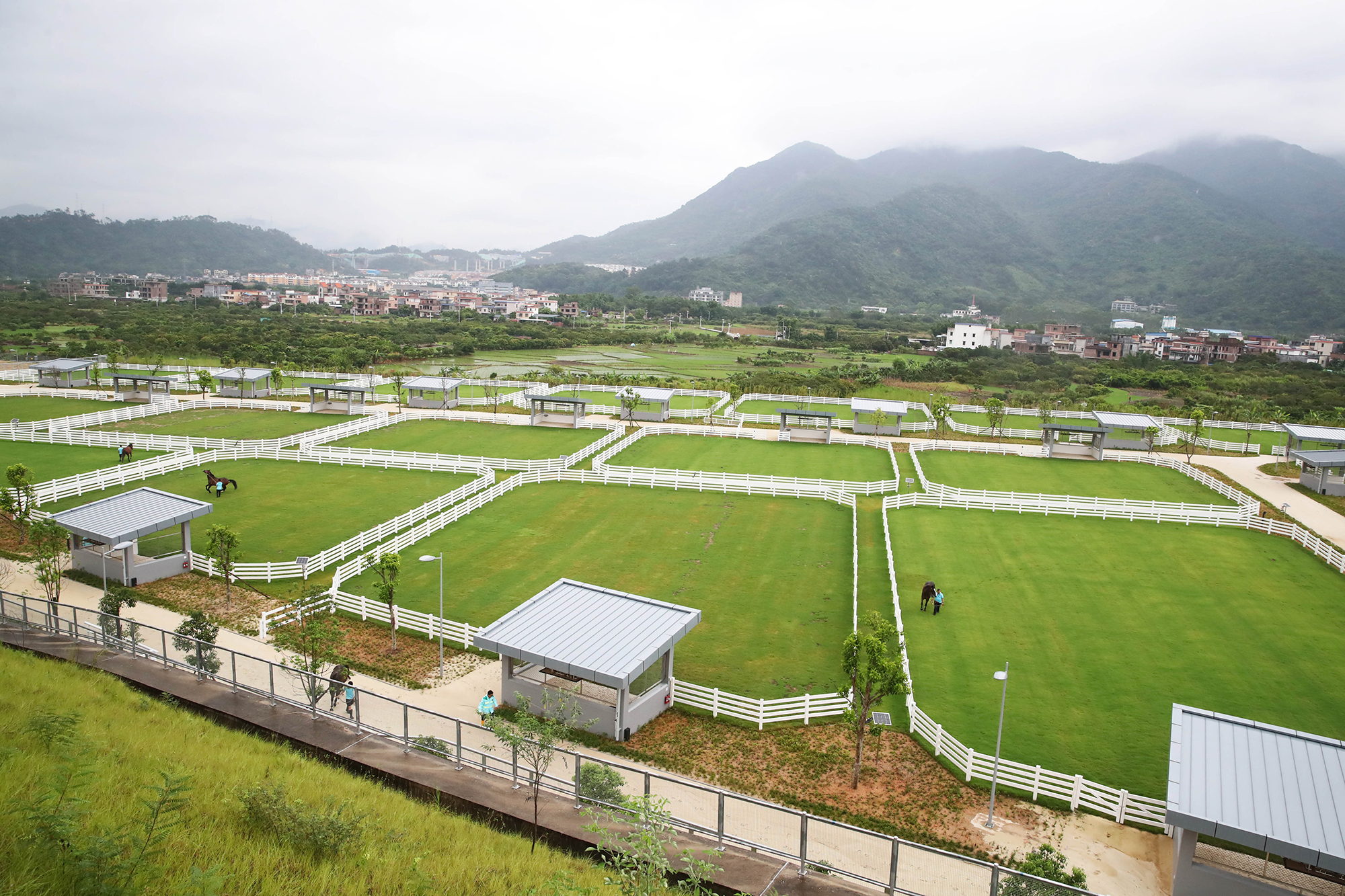
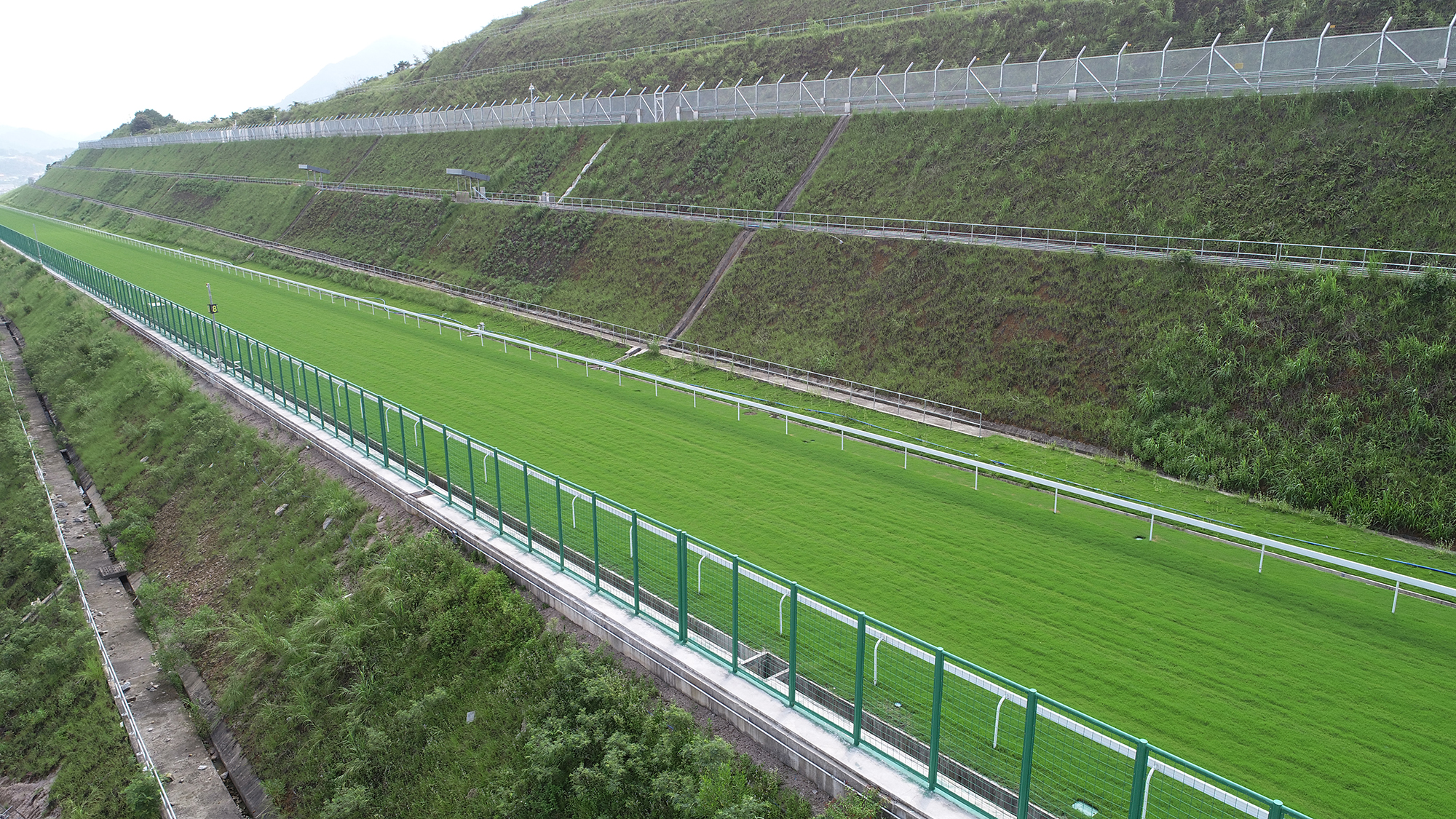
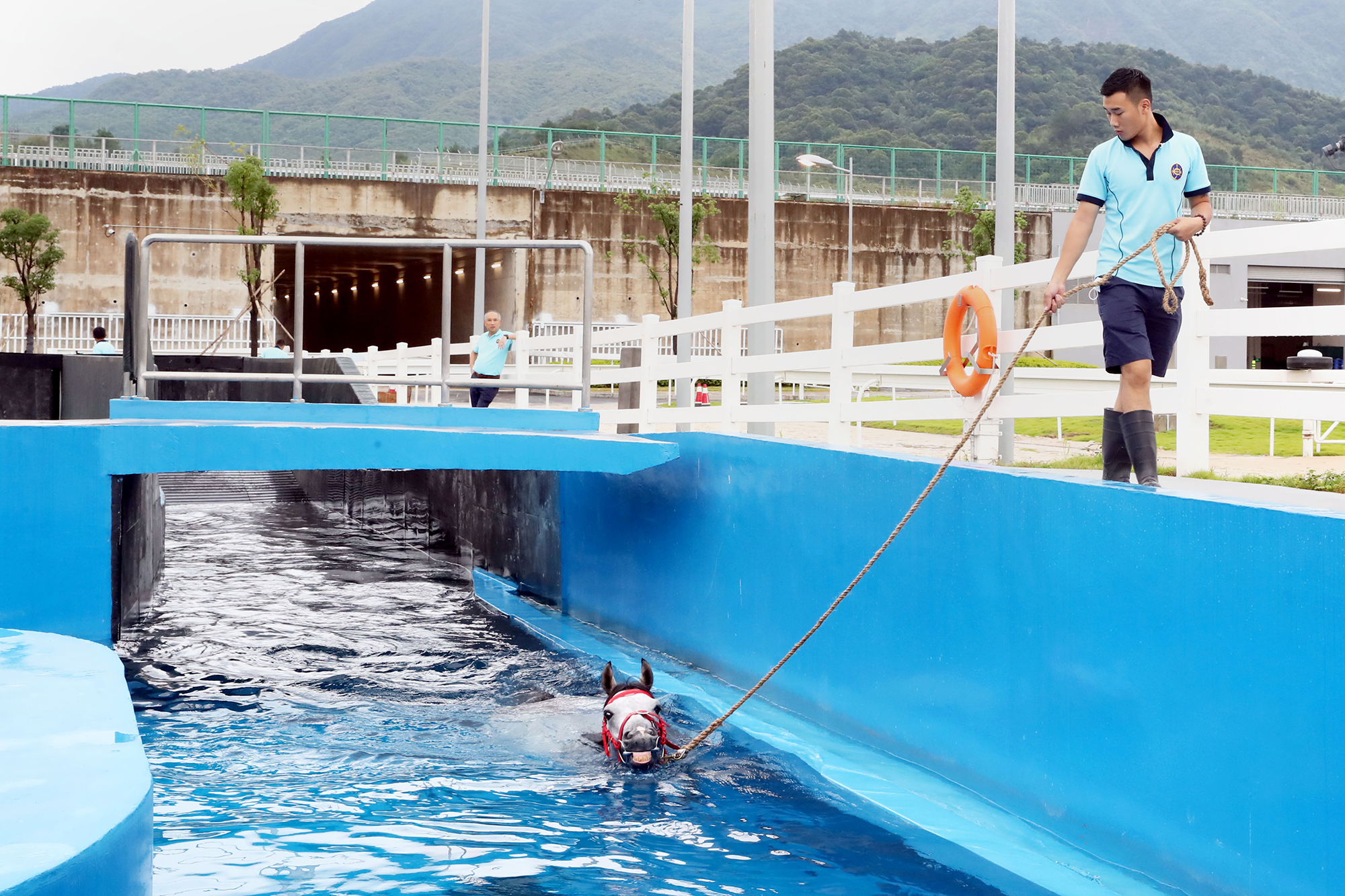
“John Size and Danny Shum in particular have spent a lot of time at Conghua”, reports Andrew Harding, the HKJC’s executive director of racing. “We have had applications from other trainers to send horses, and we will be adding another two later in the year”.
The success of the training process has kicked into gear quicker than even the ambitious HKJC team planned, and the site has already lost its initial ‘pre’ training tag.
“We had thought trainers would take horses back to Hong Kong two or three weeks ahead of a race, but they are travelling down and running just two days later—and winning”, smiles Harding. “We thought this would take perhaps a year to phase in, but it has come much quicker. The HKJC provides all the transportation, and we are already needing to ramp up the logistics—the transport initially between the two sites was twice a week, but we have extended it to six days a week (much earlier than anticipated). The travelling process had also been taking five business days to process with the levels of administration required for the border crossing, but our dual site trainers said that was too long. We have already narrowed that down to two days. Trainers can now ship on Monday in order to race on Wednesday at Happy Valley, and the horses need to undergo certain veterinary examinations ahead of racing; so they have to be in Hong Kong two days ahead of racing. They can then return to Conghua on Friday. The transport costs are all part of the HKJC’s service, and owners do not see any extra expense”.
Establishment of the Equine Disease Free Zone…
TO READ MORE —
BUY THIS ISSUE IN PRINT OR DOWNLOAD
WHY NOT SUBSCRIBE?
DON'T MISS OUT AND SUBSCRIBE TO RECEIVE THE NEXT FOUR ISSUES!
Why are leg boots not commonly used in racing?
By Dr. David Marlin
Lower leg injuries are extremely common in all types of race and sport horses. Risk factors for traumatic injury from shoes on other legs due to over-reaching or brushing or even from other horses in racing or polo include high speed, jumping and rapid turning. Injuries can also occur from sharp stones being thrown up from the ground. Whilst in sports such as eventing and showjumping, it’s unusual to see horses competing without leg protection at least over the forelimb tendon area; in racing the use of protective boots is much less common. This is also true for polo—a sport which would present a high risk of injury to the lower leg due to balls, sticks, high speed, turning and close proximity to other horses. So is the risk much lower than we might expect, or is their some other reason why boots are not commonly used in racing?
Epidemiological studies of injuries to racehorses in training and racing certainly don’t point to a large risk for interference-type injuries from shoes within or from other horses. In the younger flat racehorse population, fractures remain the greatest concern both in training and racing. Injuries due to forelimb Superficial Digital Flexor Tendons (SDFT) tendonitis and Suspensory Ligament (SL) desmitis are not uncommon, with a prevalence of around 10-20%. However, information on the rate of injuries due to interference in racehorses is generally lacking.
Whilst an injury to the lower forelimb where the skin has been cut and there is clear penetration is easily identified, this is not the only way that tendons may be injured. Blunt force which does not result in obvious superficial injury may still lead to internal bruising and inflammation. Repeated traumatic insults due to interference may therefore still contribute to tendon inflammation. As we now recognise that most tendon injuries are due to chronic inflammation and damage as opposed to isolated accidents, anything that contributes to tendon inflammation is a cause for concern.
The risk to tendons from the heat generated during exercise may be one of the reasons why racing has tended to shy away from the widespread use of boots, except perhaps in the case of individuals suffering repeated or severe injuries. Wilson and Goodship at Bristol Vet School showed in the 1990’s that equine tendons reached temperature of around 45°C during galloping. Tendons are essentially large elastic bands which store and release energy on each stride—one of the adaptations that makes the horse such a supreme athlete. In the same way that if we stretch an ordinary rubber band, it will heat up. Tendons have a poor blood supply, and so the heat accumulates and the tendon increases in temperature during the gallop; the longer and faster the gallop, the higher the temperature. Why is tendon temperature a concern?
Heat: Tendon cells appear to be sensitive to increases in temperature. When isolated tendon cells in culture were heated for 10 minutes at 45°C (113.0°F), around 10% died; but when they were heated to 48°C (118.4°F) for 10 minutes, then around 80% died. Similar results were found in a later study by a group from Japan. Even though the number of live tendon cells in a tendon is low, compared with the elastic matrix that makes up the majority of the tendon, injured or dead cells release inflammatory mediators which in turn can lead to tendon damage. And of course, anything that insulates the leg reduces heat loss and can lead to even higher tendon temperatures. This is likely one of the primary considerations for not using a protective boot, although there are others.
Abrasion/rubbing: Boots (or bandages) that do not fit correctly or that are applied incorrectly may lead to skin abrasion and an increased risk of skin infections. In addition, boots that allow the ingress of surface material between the boot and the skin will likely lead to rubbing.
Restriction of blood flow to and from the foot: Morlock, et al. (1994) observed pressure under bandages applied to the lower limb during galloping which they concluded were high enough to restrict blood flow. In bandages or boots applied over the fetlock and cannon, high pressures due to the method of application, the tightness of the application and the type of material used the lateral and medial digital arteries and veins could be compromised.
Restriction of range of motion: Restricting the range of motion of a joint will change the loading dynamics of the joint. This may be beneficial in the case of a joint that is injured, but this will reduce the extent to which that joint dissipates forces during the loading phase. This may in turn lead to overloading of other limb structures. If the restriction is only on one limb, then this may lead to asymmetry and an increased risk of injury in the un-restricted limb. The effect of various equine boots on range of motion both in vitro and in vivo has been reported (Balch, et al. 1998; Kicker, et al. 2004).
Contact dermatitis: Boots and bandages have the potential to cause contact dermatitis. Neoprene is commonly used in boots, but it has been estimated that around 6% of horses are allergic to neoprene. Rosin (also known as colophony), which is commonly found in the resin of pine and conifer trees, can cause skin contact sensitisation. It is used in neoprene adhesives and may also pose a risk of contact dermatitis in horses. The risk of skin infection is also increased by boots and bandages that do not allow sweat to evaporate and therefore result in hyper-hydration of the skin under the boot or bandage. This results in both an increased susceptibility to mechanical trauma to the skin from friction and an increased risk of infection, particularly by fungi.
Increase in weight….
TO READ MORE —
BUY THIS ISSUE IN PRINT OR DOWNLOAD
WHY NOT SUBSCRIBE?
DON'T MISS OUT AND SUBSCRIBE TO RECEIVE THE NEXT FOUR ISSUES!
The latest from Gavin Hernon
Zyzzyva on the left and Beeswax on the right.
2019 has been good to us thus far. I was delighted to see Zyzzyva and Beeswax both recently make the Chantilly winners enclosure, getting us out of an annoying bout of seconditis. Finishing second place is so very bittersweet for me. On the one hand the horse is well and has put in a good performance, on the other... well, it’s not first. If all our seconds had won, then we would have well passed our target of 10 winners for our first year; however, as my mother rightly said, “better second than second last” and I am truly over the moon with how our horses have been performing over the last few months. Our 14 runners since January 1 have tallied as 3 winners, 6 seconds, a third and 4 not hitting the frame.
As the flat season beckons in earnest, excitement has been building over the past few weeks as we assemble an exciting team of horses. In total, we anticipate having just over 20 horses for the season with a 50/50 split between older horses and juveniles. I am extremely grateful for the amount of people who have been willing to take a chance on a fresh face and I aim to reward every one of them by training their horses to run to the best of their ability.
This is without doubt my favourite time of year as we start to turn the screws on the older horses and the juveniles progress through their bone density training programme. The latter plays a significant part of our juvenile training programme and we commenced the programme mid January.
Training juveniles for bone density simultaneously conditions a horse’s lungs to the pressures they will encounter at race speed and prepares them very early on in their education for the mental pressures put on them whereby fast work becomes part of routine.
I had always been intrigued by the workings done on this by Dr John Fisher at Fair Hill in Maryland as well as the subsequent findings of studies done by David Nunamaker at the New Bolton Clinic in Pennsylvania and I strongly recommend reading up on it: bit.ly/buckedshins
The spread of equine flu has been cause for much concern over the past number of weeks, and it got worryingly close to our training centre when two yards were tested with positives just two miles away in Lamorlaye last week. We are doing all we can to not only boost our horses’ immune systems, but also to increase our biosecurity measures to give our horses every chance of not coming into contact with the virus. It did shock me to see English runners be allowed to run on French soil when their own racing authority deemed them unfit to run. That was an unfathomable logic.
Going forward, a big part of my attention will be on the health of my business as a whole.
Starting out in one of the biggest training centres on the continent brings its professional and financial pressures. We started out with a penetrative pricing model and will continue to operate as such for the 2019 season. Using some of the best raw materials on offer and having an excellent team of staff makes for very skinny margins at the end of the month. The fact that we have been winning races and showing results is by no means a bonus for our work, but a necessity.
January saw us delve into the world of claiming for the first time. Freiheit won her claimer well in Pornichet and was claimed for over €15,000. There is some excellent money that can be made even at this level of racing in France, her owners taking home €21,000 on the day.
We also dipped our toe into the other side of the claiming pool, purchasing an exceptionally well-bred Siyouni filly from the family of Bright Sky, named Siyoulater.
I can’t begin to describe how grateful I am for my excellent team! I feel we have found the perfect balance of youthful energy and wise experience. Regardless of age or experience, they all share a common vein in the fact that they simply love and enjoy horses. They make me very proud as they continue to do an excellent job. I strongly believe happy staff make happy horses, and happy horses win races. It takes as much care and attention matching morning riders to horses as it does matching jockeys. These people are essentially shaping your horses. To make a mistake and cause a personality clash in the morning could cost you dearly in the afternoon. …
TO READ MORE —
BUY THIS ISSUE IN PRINT OR DOWNLOAD
WHY NOT SUBSCRIBE?
DON'T MISS OUT AND SUBSCRIBE TO RECEIVE THE NEXT FOUR ISSUES!
Starting out - Gavin Hernon
By Gavin Hernon
It takes six hours door to door from my yard in Chantilly to Park Paddocks in Newmarket. I go there in the hope of coming away with a nice race filly for 2019.
Despite the friendly company of one of my mentors, Nicolas Clement, I can't help but feel that this is six hours of time that could be spent working through the huge workload that comes with running a racing yard.
It's been an eventful first four months in the training ranks, and I'm hugely indebted to my team to be able to say we've had four winners from just eight runners. I appreciate this is a strike rate that no trainer can maintain in the long term, but it's compensation for hard work from the team and for now it's a powerful marketing tool. When recently seeking advice from Andre Fabre regarding the start up plans I had in place, he advised me that the only marketing any trainer needs is winners.
I'm very much a goal-oriented person. For nearly five years, Nicolas Clement has been telling me that if I'm to meet my own high expectations I need to have at least 10 winners in my first 12 months. Just four months later, I feel we are on track but I'm tinkering with the idea of moving the goalposts.
December is set to be our busiest month to date on the track. With an intended runner in a couple of the remaining Listed races in the French racing calendar, I know what I want for Christmas.
Black-type is on my mind already. It’s the holy grail of this industry. It’s what we all dream of. It is so difficult to achieve but I know I have horses capable of it. As I stand on the side of the gallop waiting to see my string, there is no doubt in my mind that I will be disappointed if we fail to win a black-type race by this time next year.
Now that the stable has grown, getting systems and organisational structures in place has become more important.
I think if any of my past employers were to spend a morning with us, they would all see that parts of their training methods have left a lasting impression. Jim Bolger and Graham Motion in particular would both have cause to call it copyright.
Of course there have been setbacks and disappointments, but I've learned that you can't dwell on them. Repercussion missed his end of year target of the Prix Luthier (LR). The news wasn't overly surprising given he had been running since the Lincoln in March. The horse that took me to Arc day in my first year and gave me two wins at Chantilly will have a well deserved break on grass and will be back to 100% again for the 2019 season.
Nevertheless, making that type of phone call to an owner is a gut-wrenching feeling that I don't think I will ever get used to. Before now, I have only ever had to worry about the horse in this situation.
You have to move on, find the next opportunity; prevent the next setback from happening. Dwelling on these matters breeds negativity, inefficiency and serves no purpose to man or horse.
We took a huge risk setting up with just three horses in the middle of the season. I knew a good start leading into the European sales season was my best shot of gaining traction. Similarly, I was acutely aware that if I had nothing to show for it, I would struggle to attract investment. With current forecasts looking to be at 20 horses for the 2019 season, I feel the risk taken is starting to reap its rewards.
Rather surprisingly, I have close to 50 CVs sitting in a drawer in my office from people looking for work. No signs of the staff crisis in Chantilly it would seem. This has allowed me to be selective and form a hard working team of excellent riders who bond well.
We have signed Flavien Masse, who has ridden 55 winners, as our apprentice. Flavien served as an apprentice to Criquette-Head for a number of years.
The sales season has been hectic. Despite knowing my yard is in the excellent hands of my assistant John Donguy in my absence, I'm anxious to get back the moment I leave. It is at home where things need to go right first and foremost.
I have tried to get on sales grounds to assist current owners with their purchases as well as trying to meet as many potential owners as I can. I found this to be quite an alien concept at the start. Of course I had been used to trying to sell myself as an aspiring trainer, but the entire dynamic has changed. I don't have anybody paying me a wage anymore. Get this wrong, and there are consequences.
It was satisfying to see recent purchase Mutarabby win so impressively on his first French start in a competitive conditions race at Deauville. He wasn't at 100%, yet his performance showed that he is capable of at least Listed level and given his turn of foot, his stamina and his love of good ground, there is a race in Melbourne already on my mind should he progress in the manner I'm hoping.
2018 has been very good to me. We have a lot to look forward to next year and It is with great anticipation that my team and I batten down the hatches with plenty of dreams to keep us warm during the winter months.
TO READ MORE —
BUY THIS ISSUE IN PRINT OR DOWNLOAD
WHY NOT SUBSCRIBE?
DON'T MISS OUT AND SUBSCRIBE TO RECEIVE THE NEXT FOUR ISSUES!
Ride & Guide - which bits work best and what to use when
By Annie Lambert
It is a daily challenge for horsemen to put together bit and equipment combinations that draw out the maximum prowess of their trainees.
Bits and related training accessories are not all they depend on, however. The talented exercise riders they hire represent the hands using those bits, an important factor in the process.
Whatever bits and riggings a trainer prefers, they have a logical reason as to why their choices work within their programme. A lot of that reasoning is chalked up to trial and error experiences.
Bit Bias
Some bits are legal for training and racing while others are not allowed in the afternoons. The most recognisable of the morning-only headgear would be the hackamore. Using a hackamore requires approval from officials.
Danny Hendricks inherited his father’s talent for handling horses. His father toured the rodeo circuit performing tricks.
California trainer Danny Hendricks’ father and uncle, Lee and Byron Hendricks respectfully, toured the rodeo circuit with specialty acts, trick riding and Roman jumping over automobiles. They were superior horsemen that began retraining incorrigible racehorses. The brothers introduced many bits that race trackers had not yet explored. Danny was too young to remember those bits, but did inherit the Hendricks’ talent.
“I had a filly for Dick [Richard Mandella] way back that wouldn’t take a bit; she’d just over flex,” he explained. “If you just touched her she’d put her nose to her chest and go straight back. I put a halter on her with a chifney, so it just hung there, put reins on the halter and started galloping her. It took months before she’d finally take that bit.”
The majority of trainers shrug off which bits are not allowed in the afternoons as they are not devices they’d think of using anyway. In fact, most trainers never ponder “illegal” bits.
Based in Southern California, Hall of Famer Richard Mandella personally feels it’s easy to make too much out of bits. He prefers to keep it simple where possible and to change bits occasionally, “so you put pressure on a different part of the mouth.”
ABOVE: One of the most used snaffles is the D bit, while the Houghton (R) is reserved for horses difficult to keep straight
“I don’t want to hear a horse has to have a D bit every day or a ring bit every day,” Mandella offered. Adding with a chuckle, “It’s good to change what you’re doing to their mouth, which usually isn’t good with race horses.”
Mandella learned a lot from a Vaquero horseman, Jimmy Flores, a successful stock horse trainer. His father was shoeing horses for Flores, who encouraged Mandella, then eight or nine years old, to hack his show horses around.
“Jimmy would put a hackamore on them, to get the bit out of their mouth,” Mandella recalled. “He said to me once, ‘You don’t keep your foot on the brake of your car, you’ll wear the brakes out.’ He was a great horseman.”
Trainer Michael Stidham introduced Mandella to the Houghton bit, which originally came from the harness horse industry.
“The Houghton has little extensions on the sides and it is like power steering,” Mandella said. “As severe as it looks, it’s not hard to ride. We’ve had a lot of luck with horses getting in or out, it corrects them.”
David Hofmans, a multiple graded stakes winning trainer, did not come from a horse background. He fell in love with the business when introduced to the backside by Gary Jones and went to work for Jones’ father, Farrell, shortly after.
“We’re always trying something different if there is a problem,” Hofmans said of his tack options. “I use the same variety of ring bits and D bits with most of our horses. We use a martingale, noseband and sometimes a shadow roll. If you have a problem you try something different, but if everything is okay, you stick with what works.”
Michael McCarthy spent many years working for Todd Pletcher before moving his base to California. When it comes to bits, he hasn’t varied much from his former boss. McCarthy reminded, “When the horses are comfortable, the riders are more relaxed and everybody gets along better.”
“Most horses here just wear a plain old, thick D bit,” he said from his barn at California’s Del Mar meet. “Some of the horses get a little bit more aggressive in the morning, so they wear a rubber ring bit. In the afternoons, if we have one that has a tendency to pull, we may put a ring bit with no prongs.”
McCarthy discovered the Houghton bit in Pletcher’s where they used it on Cowboy Cal, winner of the 2009 Strub Stakes at Santa Anita. He uses the Houghton sparingly to help horses steer proficiently.
Louisiana horseman Eric Guillot said from his Saratoga office that he uses whatever bit a horse needs—a lot of different equipment combinations.
“I use a D bit with a figure 8 and, when I need to steer them, a ring bit with figure 8 or sometimes I use a ring bit with no noseband at all,” he offered. “Sometimes I use a cage bit and I might use a brush [bit burr] when a horse gets in and out. Really, every situation requires a different kind of bit.”
Control Central
An early background riding hunters and jumpers has influenced the racehorse tack choices of Carla Gaines.
“I like a snaffle, like an egg butt or D bit, or something that would be comfortable in their mouths,” she offered. “I use a rubber snaffle if the horse has a sensitive mouth. I don’t like the ring bit because it is extra [bulk] in their mouth.
“A lot of the jockeys like them because they think they have more control over them. I know from galloping that it doesn’t make them any easier; it probably makes them tougher.”
The beloved gelding John Henry will forever be linked with his Hall of Fame trainer, Ron McAnally. The octogenarian has stabled horses at the Del Mar meeting since 1948. From his perch on the balcony of Barn one he surveyed the track and pointed out changes he has seen made over his 70-year tenure there. During those years there have been fewer changes in the equipment he uses than those stable area enhancements.
“Basically a lot of the bits are still the same; they’ve been that way for I don’t know how many years,” he recalled. “Occasionally you’ll find a horse that tries to run out or lugs in, and they’ll put in a different kind of bit.”
According to McAnally’s long-time assistant trainer, Danny Landers, things stay uncomplicated at the barn.
John Sadler’s training habits have also been influenced by his days showing hunters and jumpers. Although he uses the standard bits, decisions are often made by the way horses are framed and balanced.
“I want to see horses carry themselves correctly,” he said. “I’ve always had really good riders since I’ve been training. That is very important to me.”
Sadler likes one of the more recent bits, the Australian ring snaffle, which helps with steering. The bit has larger cheek rings, which helps prevent pinching. He also employs a sliding leather prong.
British born Neil Drysdale, who was inducted into the Hall of Fame in 2000, has been in the states his entire training career. His tack room is one of those treasure troves of equipment, much of which he has only used a time or two. He keeps choices simple and prefers to match each horse to the best bit for the individual.
A shadow roll, used to lower horses’ heads, hang over a rubber ring bit
“I’m not actually keen on the D bit,” he acknowledged. “I think it is quite strong. Every now and again you have to use something stronger, and we’ll use a ring bit or an Australian ring bit, which is quite different and I think it works very well. We have a Houghton which I use rarely; you hope you don’t get those problems and need it.”
No one will ever accuse Louisiana-bred trainer Keith Desormeaux of being anything less than frank when asked his opinion.
“I’m not a big believer in bits,” he said. “Being a former exercise rider, I have my own strong opinions about bits. My strong opinion is that they are useless. My personal preference is a ring bit, because they play with it, not because of its severity. People use it to help with control; you pull on the bit and the ring pushes on the palate.
“When horses play with the ring bit it diverts their attention from all that’s going on around the track. I don’t take a good hold; it just diverts them from distractions going on around them.”
TO READ MORE —
BUY THIS ISSUE IN PRINT OR DOWNLOAD
WHY NOT SUBSCRIBE?
DON'T MISS OUT AND SUBSCRIBE TO RECEIVE THE NEXT FOUR ISSUES!
Is all-weather racing no longer the poor relation?
By Amy Lynam
For much of 2018, racing fans waited with bated breath for the return of Enable. Musings on when and where the wonder mare would reappear were many and varied, but few predicted that the Arc De Triomphe heroine would make her seasonal debut at Kempton on the polytrack surface.
Almost two years prior, the regal Juddmonte homebred, who had garnered high regard at home, made her very first racecourse appearance on Newcastle’s Tapeta track. That fateful day was the 28th of November 2016, when, of course, flat racing had left the turf for the winter months, narrowing John Gosden’s choice to two: run his future star on the all-weather, or not until March.
Enable winning the Arc de Triomphe
Gosden did, however, have turf options in September of 2018, and when quizzed on the decision to run a then five-time Gp1 winner on the all-weather, he had no hesitation: “We had aimed Enable at York, but it came about a week or ten days too early, so Kempton came at exactly the right time. The fact that it was on the all-weather didn’t concern me, as I knew exactly what I was going to get.”
For Enable’s return in the Gp3 September Stakes, the going was described as standard to slow, whereas on the very same day, Ascot raced on good to firm (good in places), while the going at Haydock was heavy. There are few surprises in the going on the all-weather; after all, the clue is in the name, and its consistency is very much appreciated by John Gosden, who says, “When the ground goes too firm in the summer, or during drought, or it becomes bottomless at the end of autumn, the all-weather is a nice place to be. It’s consistent, with bounce, and you can ride a proper race on it.”
It would, however, be unfair to look at all-weather racing as one entity, with “all-weather” encompassing various surfaces, mainly fibresand, polytrack and Tapeta™. Not only this, but each racecourse has its own shape and quirks, as well as its own race programme. Just as on the turf, no two courses are the same.
INSERT TABLE
Gosden is just one trainer who, unsurprisingly, has some favourites, as he shares, “The all-weather track I like the most is Newcastle; it’s very fair and has a good Tapeta surface. It has always been a fair, sweeping course; there are not too many hard luck stories there.” His favour for other all weather tracks is not quite so strong, as he continues, “There’s no doubt that at the likes of Lingfield, you get some unevenly-run races, where they slow the pace down early on and sprint in the straight.”
The opinions of trainers on particular tracks undoubtedly has a great influence on what horses, including what standard of horse, they will run at each. Though he has less hands-on experience with the all-weather racecourses in the UK, French-based trainer John Hammond is impressed by the surface at Lingfield, saying, “I have walked the all-weather track at Lingfield, and it is ‘night and day’ when compared to the all-weather tracks in France.”
When discussing all-weather racing, Hammond is keen to stress the importance of how each track is managed. “All-weather tracks need to be very well maintained and managed by very good groundsmen. I don’t think they pay enough attention to these tracks in France, and they often get too quick.” Hammond could not recommend French all-weather courses’ consistency as Gosden had, as he says, “The all-weather tracks here vary considerably. I wouldn’t mind running a good horse at Lingfield, or Kempton, but Chantilly can be a bit quick.”
All-weather surfaces have been touted for their lack of fatal injuries, but John Hammond sees a different type of injury on all-weather tracks, and this is one of the reasons he does not have many runners on the surface. “I do think young horses suffer from racing on the all-weather,” he says. “I see an increase in bone bruising to the hind cannon bone due to the fact that there is no slippage on synthetic surfaces.” Hammond gained experience in California before taking out his training licence, which has had some effect on his views. “America has torn up most of it’s all-weather tracks. They may have been applauded for fewer fatal injuries, but bone bruising causes intermittent lameness. This can leave a horse runnable but not performing at its best.”
When questioned on potentially running his stable stars on the all-weather, Hammond said, “I wouldn’t be keen on running my top horses on the all-weather in France. If the French all-weather tracks were a bit softer, I might be more keen on it. It didn’t do Enable any harm!”
TO READ MORE —
BUY THIS ISSUE IN PRINT OR DOWNLOAD
WHY NOT SUBSCRIBE?
DON'T MISS OUT AND SUBSCRIBE TO RECEIVE THE NEXT FOUR ISSUES!
Starting out - the latest update from new trainer - Gavin Hernon
Saturday 18th August 2018, a dream start and a day that will live very long in the memory.
To win a Deauville maiden, an hour before the hammer starts to fall on some of the best-bred yearlings in Europe would be a special moment for most trainers. I still need to pinch myself to be sure I'm not in a dream to have won the Prix Des Etalons Shadwell with my first runner.
Icefinger is a horse we have always thought might have a touch of class. We had given him Group entries before his race but we might opt for a Listed race to allow him grow up. His very relaxed manner at home just meant that it took him a bit of time to come to hand. Despite our belief in him, I never thought he would be able to beat nice horses who had experience in regarded maidens at the first time of asking. That day was a nice way to culminate the start-up phase of our yard.
ICEFINGER
I firmly believe that the authorization and licensing process in France is the best grounding one can get. That said, it still doesn't quite prepare me for what comes next. Establishing a company in France and getting all the necessary paperwork in place isn't the most straightforward and this is probably an area where France lags behind other neighbouring countries. Admittedly, through August most of Europe takes the month as a holiday which adds to the timeline to do anything. It probably doesn't help that I'm wired to prefer spending time outside with the horses.
I am fortunate that I have an excellent accounting firm in Equicer guiding me through everything step by step and now we're fully set up and running. Even my bank account got held up in the bureaucracy so I'm grateful to my suppliers for their patience.
I feel it is necessary to say that Olivier Delloye of France Galop is an exception and his help throughout has been nothing short of phenomenal given his busy schedule and without him, Icefinger probably would not have been able to run when he did.
My previous update had been written days before myself and my girlfriend, Alice moved into what had served as a lucky yard to Mr. Francois Doumen on the Chemin du Mont De Po. It boasts 25 of some of the newest stables to be built in Chantilly and direct access to Les Aigles and Les Lions training centres. We are very excited to be training from here, the horses love the bright, well circulated boxes and we have settled in well.
We're up and running with three horses in the yard so far, for three different owners, and they've all run already! I'm lucky to have three good owners to start with, who all are interested in doing more and having more horses in France. Icefinger is a dream, one that his owner BLC Horse Racing, agent Morten Buskop and I are hoping will take us to exciting places over the coming months. We'll take it step by step as he still needs to learn more about his job!
We tried to be adventurous with Repercussion, entering him in the Prix Quincey. He is a quirky horse, but he has a lot of ability and just needs things his own way a little bit. Maybe a confidence booster might be best for him!
Epic Challenge is a gent of a horse who has quite a bit of ability. He found instant fame in Chantilly helping to catch a loose filly and being very chivalrous about the whole encounter. Despite his gentle nature, his testicles appear to be causing him some pain and he is set to be gelded in the coming days. I see him having a bit in hand off his UK mark of 83 in time.
We've been working hard to get around the sales and meet people to try and strike up and build relationships with new owners and horses and all going well we've got a few things in the pipeline. It's very difficult at this stage as we have to balance between managing the horses we have in and picking up new ones. Currently it's only Alice and I in the yard which makes getting away that bit harder - Alice is doing a great job riding the horses as evidenced by Icefinger! We've managed to attract a couple of experienced exercise riders for the yard as well who all come on board in the coming weeks and we'll start to get into a more established routine on a bigger scale.
Understandably, our current model of training three horses is far from being a financially viable one. It is however, what I consider to be a key stage in presenting what we do to potential clients. Attracting support in this industry has never been easy, particularly if there aren't results to back it up and I felt that if we could show some results from limited numbers during the sales season, it might just tip some potential clients over our side of the fence and be worth the financial risk.
The moment the first horses arrived on to this yard, life took a significant turn and a commitment was made to give maximum effort in getting the best out of each and every individual that walked into the yard.
There are no hiding places on any racetrack and without an attention to detail that rivals the competition, 4.30 a.m. starts would be in vain and days like Saturday, 18th August 2018 would remain as dreams unfulfilled.
TO READ MORE —
BUY THIS ISSUE IN PRINT OR DOWNLOAD -
WHY NOT SUBSCRIBE?
DON'T MISS OUT AND SUBSCRIBE TO RECEIVE THE NEXT FOUR ISSUES!
The importance of good nutrition and its bearing on mental health
By Lissa Oliver
Unique to the racing industry is the daily need for staff to meet required maximum weights. Many in racing already believe they understand nutrition and the best methods to make weight, using tried and tested practices that have been in common use for decades. The perceived success of such practices leads to an attitude of ‘it works for me’ and a reluctance to change or adopt new suggestions, and few consider the future consequences on health in later years.
Dehydrating and starvation to make weight is commonplace, and long periods in saunas and salt baths, laxatives and self-induced vomiting are familiar practices. The health implications associated with these include poor bone density, hormonal issues and impaired mood profile. Despite increased awareness of these problems, they remain as common globally as they were thirty years ago.
To help address this, the UK based Racing Foundation awarded a grant of just over £200,000 to support a ground-breaking, nutritional intervention programme developed over three years by a specialist team at the Research Institute of Sport and Exercise Sciences at Liverpool John Moores University. The team is led by former jockey, Dr George Wilson, and includes the head of nutrition for cycling’s Team Sky, Dr James Morton, and Daniel Martin, a doctoral researcher and high-performance nutritionist for the Professional Jockeys Association.
Dr Wilson has already spent seven years (part-funded by the Sheikh Mansoor Racing Festival) researching the serious health implications of extreme weight-making practises in jockeys and has designed healthier, alternative weight-making programmes. In addition to offering the facilities at the University to measure bone and body composition, hydration, metabolism and provide strength and fitness assessments, he also works with racing organisations to provide workshops, tests, presentations and bespoke advice. He is in the ideal situation to conduct research into the health issues faced by racing staff, having ridden as a National Hunt jockey in his younger days.
“For my first ride as a conditional jockey at Southwell in 1985, I lost a stone in five days to make 10st (63.50 kg) minimum weight, felt awful and, given the occupational risks, I shouldn’t have been near a horse, let alone riding in a race,” he reflects on his experience. He later rode as an amateur mostly in point-to-points and hunter chases when weight became a problem. “Having ridden over jumps, I fully empathise with staff and understand the need for, and risks from, dehydration and starvation. Riding out stable staff are weighed in some yards and most vacancies are advertised with a maximum weight, so making weight is not just a problem for jockeys but also for a lot of racing staff.
“I was aware that not a lot had changed since my own time in yards in the 1980s and 1990s and so I decided to do my doctorate in the effects of common weight-making practices such as dehydration and nutrition (or lack of!). In 2009 I started my first research and have now had 11 papers published.”
Currently, Dr Wilson is studying the effects of diet, dehydration and bone health of jockeys, but, as he recognises, comparisons of bone density between standard 12st athletes and 9st, (57.15 kg), jockeys may have potential flaws given jockeys are an atypical population, being much smaller athletes. Furthermore, unlike other athletes, jockeys don’t tend to perform substantial hard surface training that helps maintain healthy bone metabolism.
Assisting Dr Wilson is Daniel Martin, and their paper, Qualitative Research in Sport, Exercise and Health (31 August 2017), is the first body of research to investigate the opinions and practices of racehorse trainers in relation to rider welfare. Disappointingly for the researchers, from over 400 invitations, only five trainers expressed an interest to take part, something that certainly needs addressing.
A reluctance to face up to industry problems isn’t new and is not confined to trainers. “When I first went to the British racing industry authorities and said I wanted to do this, they originally didn’t offer any help,” he reveals. “There appeared to be a reluctance to accept that the current services and advice to help riders, particularly with weight-management, were clearly not working. Therefore, I just ‘kicked on’ with my research, and because jockeys had not received the sports science support in the past, they flocked to LJMU to undergo the testing and receive bespoke weight-management programmes.
“Thankfully, now everyone is aware of the issues and have embraced the research findings on healthier weight-management practices, and it appears we are all singing from the same hymn sheet. Indeed, Dr Jerry Hill, the Chief Medical Advisor at the British Horseracing Authority, is a collaborator on some of my recent published research and we have some other research projects we are currently working on together.”
Even so, it is an industry culturally-driven and based on the shared knowledge and experience of its senior professionals, which can represent an obstacle to Dr Wilson and his team when some of that knowledge is outdated and incorrect. As Martin explains within one of the published papers, “If apprentice and conditional jockeys can carry some knowledge of evidence-based practices and the dangers of traditional methods into their early careers, there will be less of a reliance on seeking advice from senior jockeys. Similarly, over time the ‘new’ practices will hopefully supersede the current archaic medley of dehydrative methods.”
It certainly behoves trainers to ensure that younger staff members are set good examples and it isn’t asking too much of their time or level of expertise to provide suitable meals, in yards where catering is offered. Where meals are not provided, posters and literature should be made available to display in the yard to help encourage awareness of a good diet.
TO READ MORE --
BUY THIS ISSUE IN PRINT OR DOWNLOAD -
WHY NOT SUBSCRIBE?
DON'T MISS OUT AND SUBSCRIBE TO RECEIVE THE NEXT FOUR ISSUES!
Travelling Stateside - The trainer's perspective
By Alex Cairns
In recent years, international travel has become much more accessible and people now regularly embark on journeys previously the reserve of a few trail-blazing adventurers. The same is true for racehorses, whose handlers can today chart careers based on a rich international programme that offers opportunities year-round. For European trainers, America is perhaps the most readily accessible intercontinental option, with fewer regulations to be negotiated than in Asia or Australia. The relatively reduced distance from Europe to the US also provides an incentive, especially if running in the east of the country.
Ed Dunlop has been travelling horses to some of the world’s far-flung reaches for almost 20 years now and has consistently demonstrated his ability to get it right thanks to the success of horses such as Lailani, Ouija Board, Snow Fairy, and Red Cadeaux.
WHY AMERICA?
Ed Dunlop’s experience of running Lailani in the US in 2001 benefitted his subsequent runners.
There are lucrative and prestigious opportunities for all types of horses in America, notably in the Breeders’ Cup or the Fall Meet at Keeneland in Kentucky. Dunlop may have been steeped in racing from his earliest age thanks to the exploits of his now sadly departed father John, but sending horses to the US was a learning curve nonetheless. “One of my earliest experiences and successes in America was with a filly called Lailani. She won the Irish Oaks in July 2001 before we sent her to Belmont in New York for the Grade 1 Flower Bowl Stakes in September of the same year. She won that too, but then ran badly in the Breeders’ Cup Fillies and Mares, again at Belmont. I learnt a lot from her actually because we left her there after the Flower Bowl and I think that affected her performance. This helped us adapt our approach with Ouija Board, who provided us with some our biggest days in America, winning two Breeders’ Cup Fillies and Mares in 2004 and 2005.”
In 2001, a trip to the east coast of America still represented a serious logistical challenge and financial outlay for European runners, so one can understand Dunlop’s decision not to ship Lailani home between runs. Today, however, advances in transport and reductions in cost make flying visits a viable option. “If you look at someone like Aidan O’Brien, who is probably the most accomplished trainer in the world these days when it comes to travelling horses, he flies them in and out as if they were just travelling to the races down the road in a horsebox. That seems to be the best approach, though isn’t always possible depending on the destination.”
PREPARATIONS
Ouija Board, a dual winner and runner-up in the Filly & Mare Turf in three visits to the Breeders’ Cup.
So scaling up the same practices employed for running a horse a few miles down the road can be a winning formula, but any international campaign will nonetheless require a certain amount of preparation and planning. How should a horse be prepared for international travel? And how might running in the US compare to Asia or Australia? “Travelling horses to America tends to be a lot more simple, as there aren’t lengthy quarantines to be negotiated for us on the UK end. When we send horses to America they are travelled fit, put in the barn and kept there apart from for exercise. Then they run and come home soon after. From our experience, travelling to Australia or Japan is a lot more complicated, as both countries have very tough rules and normally around a month in quarantine is required. These regulations also affect what you can take feed-wise, so that has to be taken into account.”
Sheer geography can also have a strong influence on where might be best for European trainers to launch an international campaign. “Travelling from the UK to America is not such a huge distance, if we’re talking about the east coast anyway, so that makes it all the easier. The further you fly a horse then the greater the cost, the more susceptible they are to travel sickness, and the more chance there is of incident along the way.”
TO READ MORE --
BUY THIS ISSUE IN PRINT OR DOWNLOAD -
WHY NOT SUBSCRIBE?
DON'T MISS OUT AND SUBSCRIBE TO RECEIVE THE NEXT FOUR ISSUES!
Back to School: Dressage as a Training Tool
Published in European Trainer, January - March 2018, issue 60.
To those not familiar with the idea, or indeed not familiar with the intricacies of managing the mind and body of the young thoroughbred, it might seem peculiar to take an animal bred for generations and engineered over centuries to display nothing short of super equine speeds, gargantuan leaps, and feats of middle-distance endurance, and to then turn it to the steadiest, most controlled, poised equestrian discipline. As mad a thing to do as this might seem at the end of such a horse’s career, to delve into it a day or so each week, or perhaps to go for an out-of-season dressage “staycation,” could seem just plain bizarre.
So why are we hearing more and more about the speedy souls that inhabit the world of horseracing sneaking out of the realms of the snaffle bit, flat saddle, jeans, and Cuban heel to indulge jodhpurs, curb chains, extremely high cantles, and Spanish topped-boots?
Well, it might not be as bizarre as it sounds. Three generations ago it was hard to find a trainer who hadn’t enjoyed some formal equitation training, most likely through the armed forces, but that was also an age where there was still some form of reliance upon the horse for anything as fundamental as travel, so there was simply a greater and more widespread understanding of the horse across the board. Many would have also known how to drive as well as ride simply from necessity. Later we will speak to one of the very few young trainers to have actively pursued driving, itself now a sport with an element of dressage.
Fewer and fewer trainers with each passing generation have a formal education in the fundamentals of classical riding, and it is perhaps only natural that in the face of such a decline there will be those that look to find an advantage in redressing this balance. Of course, there are always trainers who come to horseracing from more conventionally classical disciplines, many of them hugely successful regardless of code, country, or surface, and these exceptions prove as interesting as those who seek the help of specialist dressage instructors or riders to enhance the complex set of skills that have led to their success...
To read more - Buy this issue online here
Or Subscribe!
Gallery
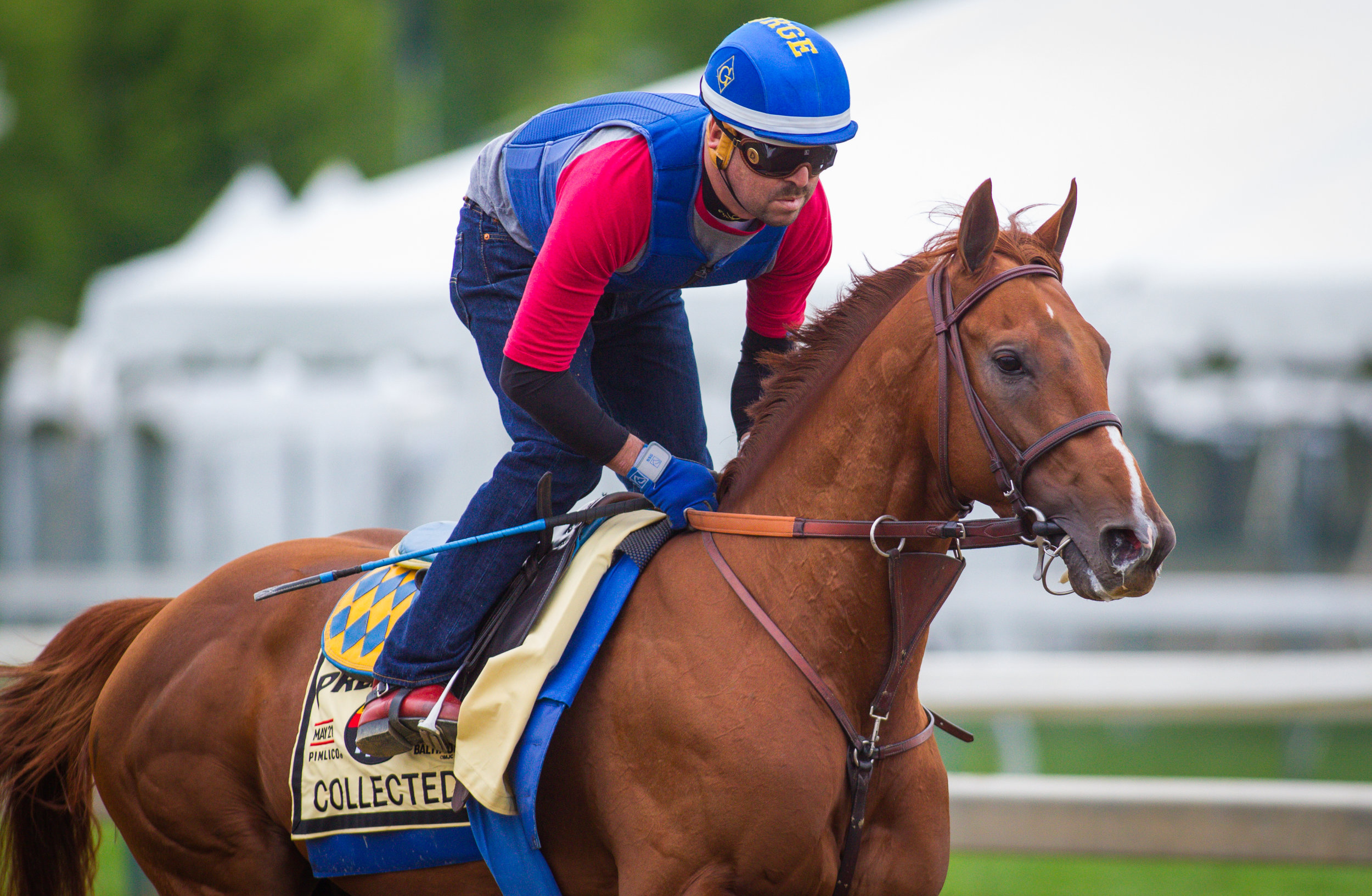
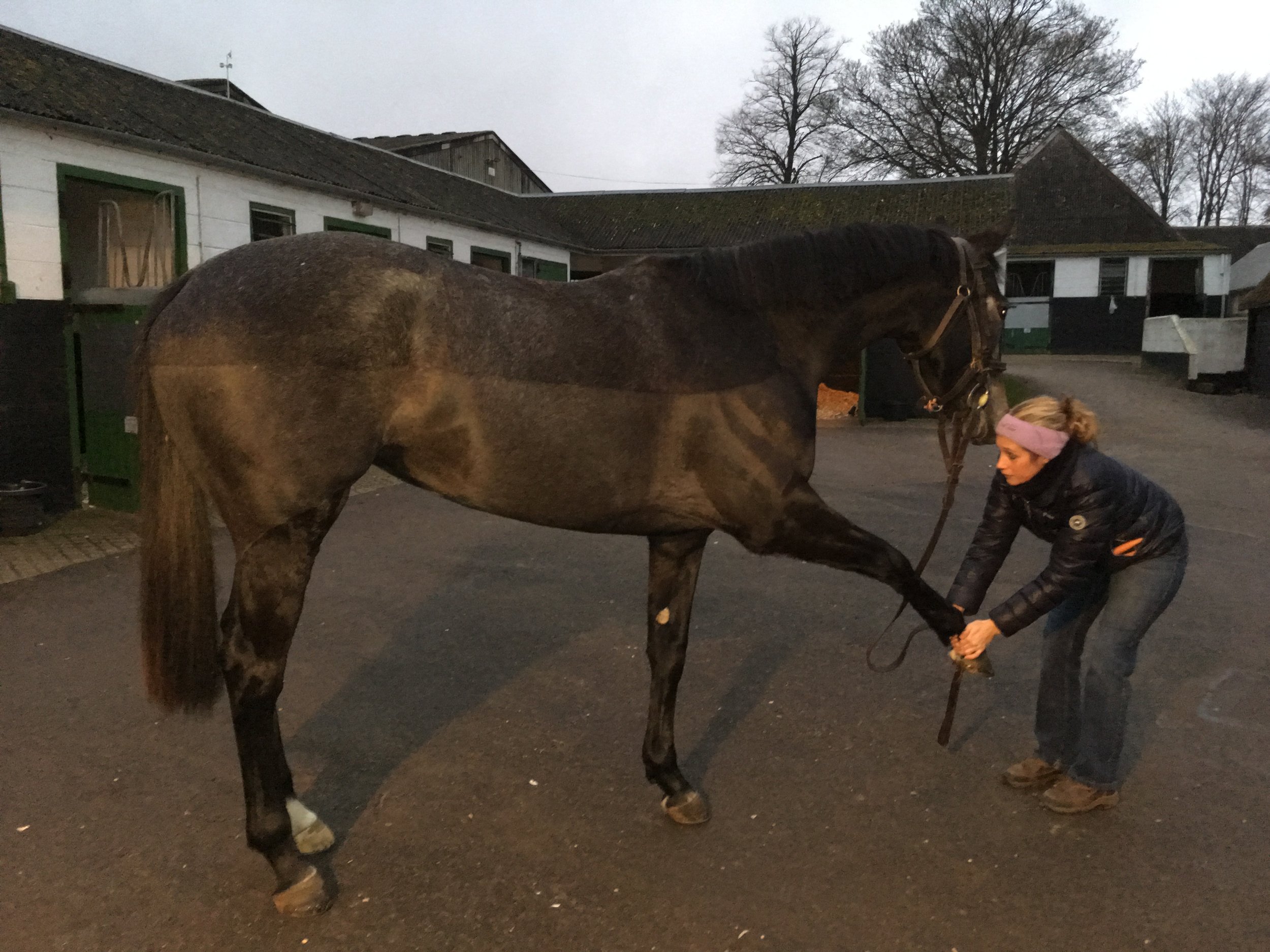
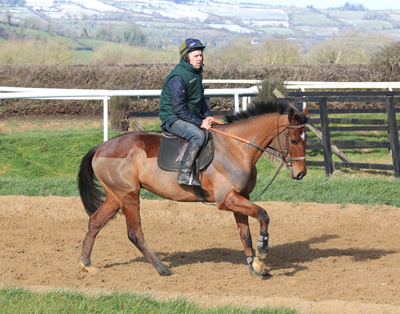
Starting Up: Where in the EU can New Trainers Get the Best Start?
Published in European Trainer, January - March 2018, issue 60.
In the previous issue of European Trainer (Issue 59, October-December 2017), the Trainers’ Daily Rates Survey was summarised, while Europe’s best training centres were also featured. From the former we learned that only 38% of trainers derive their sole income from training, yet this doesn’t deter hopefuls from taking out their first licence. So, where is the best place to set up a new yard to tip the balance in your favour?
Just over half of European trainers keep between 10-50 horses; fewer than 10% have more, and it is generally not considered to be economically viable to train fewer than 30 horses. The average daily rate per horse charged by a trainer is €43, which would provide a weekly revenue of €9,030 for a 30-horse yard.
Comparing daily rate to staff wages, there is little benefit to be found in starting up in one country versus another. The EU minimum wage maintains a constant across the board although the stable staff associations of some countries, such as Ireland, do ensure that a higher rate is paid. Therefore, anywhere from 50-90% of the daily rate charged will go to staff. A shortage of good riders and experienced staff is currently being endured throughout Europe, so, again, a new trainer is free to choose any location...
To read more - subscribe now!
Gallery
Part I: The Thoroughbred Trainer in the Digital Age
Published in European Trainer, January - March 2018, issue 60.
This is the first article in a two-part series on social media for thoroughbred trainers. It examines social media usage and issues faced by trainers who wish to promote their business online. Part II will focus on broader industry issues and how trainers may use social media to affect positive change and ensure the future of the sport.
In less than 15 years, social media has changed the way we meet, work, shop, communicate, consume news and entertainment, find romance, and more. Few aspects of our lives have been left untouched by this remarkable phenomenon. Social media has made a limited group of people incredibly wealthy, empowered others to create new businesses or expand existing ones, and made various individuals famous or infamous.
Simply defined, social media consists of online networks that allow users to connect, create, communicate, and share in virtual communities. And we cannot seem to get enough.
• 73% of Europeans use some type of social media.
• 41.7% of Europeans use Facebook, the most popular social media platform.
• Many Europeans, including three-quarters of Facebook users, log onto social media sites as part of their daily routine.
• Most European social media users utilize more than one social media platform.
• The growth of social media is likely to remain steady for years to come.
As a trainer, you may be one of the hundreds of millions of Europeans who is familiar with the ins and outs of social media. You may be an occasional, routine, or even heavy user.
Alternatively, you may be a hold-out who is too busy or privacy-oriented. Regardless of your personal opinion of social media, it is worthwhile to step back and examine how social media may assist in expanding your training business, or, alternatively, present potential risks including both civil liability and criminal violations.
As a trainer, unless you have a full roster of owners, it is wise to have a social media presence to promote your business. Consider the many positives:
Getting Found.....
To read more - subscribe now!
The Trainers' Daily Rates Survey
Published in European Trainer - October - December 2017, issue 59
Click here to order this back issue!
The survey was circulated by the European Trainers Federation representatives in member countries. Responses were received from the United Kingdom, Ireland, France, Germany, Austria, Norway and Belgium.
Results varied per country but indicated to be representative of those countries, with an even representation by Flat (41%), Jumps (15%) and Mixed (44%) trainers and feedback from small-scale (1-10 horses in training) to large scale (50+) yards. Trainers were asked to complete 28 questions relating to their current daily training rate charged to owners, the factors they feel contribute most to their daily rate, whether they make a profit, loss or break even, what factors would affect a potential increase in their rate, and what rate they feel they would ideally like to charge amongst other location-related questions.
The results indicated that average training daily rates are similar across the participating countries. The UK had the highest average at £45 (Euro equivalent at €49.95) with Ireland second at €45. France was concluded at €42 and neighbouring Germany at a lower average of €35. The lowest representation in Continental Europe was Austria at €26.
Overall, the number of horses in training varied with the highest representation (37%) training between 1-10 horses and 8.7% of respondents training 50< horses. Therefore, results represent the majority of trainers in Europe training between 1-50 horses.
Trainers were asked to rate various factors out of 10 that contribute most to the rate they charge....
To see the results from this survey - subscribe now!
Training yearlings: Schools of thought around the world
Published in European Trainer - October - December 2017, issue 59
Click here to order this back issue!
Consider throwing a thirteen-year-old school child into a university environment straight from prep school.
Sights, sounds and influences that the young mind would struggle to compute; physical rigours on the sports field that would either disappoint the mind or cause physical damage. I cannot think of any parent that would choose this for their young adolescent. Yet we often do this to the young horse, plucking them straight from the sleepy pastures of their nursery into an environment that is measured upon its production of top-level runners. Perhaps we send them via the sales…an entrance examination of sorts.
When put like this it is clear that, as custodians of young bloodstock, we might consider a period of preparation during which the horse would be introduced to saddle and rider, taught the basic lessons that would allow it to fit into the programme of the trainer that its owner chooses, as well as a careful conditioning of the physical stresses that will be tested further upon its graduation to the greater strains that will be required to reach race fitness.
For the sake of this article pre-training will be considered to be the safe development of a young horse towards its first joining a trainer or returning from a break not enforced by injury, as opposed to rehabilitation. The American racing industry has the perfect phrase for this: Legging Up.
While there has been a constant growth in the number commercial pre-training yards in Europe over the last 25 years to satisfy a growing demand for this service, this is something that has been a long standing practice further afield, particularly in countries where there is stabling pressure at the racetrack or in metropolitan stables, not to mention numerous larger owners that have chosen to keep a greater part of the horse’s young career in their control by employing a farm trainer or establishing their own pre-training division.
To read more of this article - subscribe now!
Iconic Gallops of Europe
Published in European Trainer - October - December 2017, issue 59.
Click here to order this back issue!
Why are Europe's public training areas so well known? Part of their uniqueness and fame rests with the very concept of public training grounds. There are very few public facilities throughout the world and the most common training practice is the use of racecourse tracks. In the majority of countries trainers are based at racetracks and simply use the racecourse facilities.
While many of Europe's renowned training centres are situated close to a racecourse, or are run in conjunction with that track, they are, nevertheless, separate facilities offering a wide choice of gallops and surface, often over a vast acreage. The benefit to the horse is variety and change of scenery without impacting on its daily routine or necessitating travel. For the trainer, a choice of gallops and surfaces can be tailored to a horse's individual needs and prevailing weather.
Hoppegarten
Typical of this, though less widely known, is Hoppegarten in Germany, where 13-20 public trainers are based. A common factor shared by many of Europe's renowned gallops is Hoppegarten's sand-based subsoil, allowing the racecourse track and various gallops to drain freely. As a result, coupled with modern artificial watering systems employed by groundsmen in drying weather, extreme ground conditions are avoided and consistent work surfaces are provided all year round.
Hoppegarten is home to the biggest training grounds in Germany, encompassing over 500 acres of woodland, with 10km of walking and trotting paths, and since 2013 it has been granted the status of a Landmark of National Importance.

![[MAIN PIC CREDIT - Steven Cargill][HEADLINE]Scientific research uncovers the performance advantages of reducing bridle pressure[STANDFIRST]Using a modified bridle design has a significant impact on whole horse locomotion–front and hindlimb–not just …](https://images.squarespace-cdn.com/content/v1/517636f8e4b0cb4f8c8697ba/1593693603151-CAL2DMAR3WZDHLNERMS4/main+pic+CREDIT+Steven+Cargill+%281%29.jpg)
![A sensor mat was used under many different bridles and nosebands to measure and record pressure on the horse’s head in motion.]](https://images.squarespace-cdn.com/content/v1/517636f8e4b0cb4f8c8697ba/1593694323039-6BMJLN0U5SU59OFM138R/PIC+1+%281%29.JPEG)



![HEADLINE]How girths have been scientifically proven to have an impact on performance[STANDFIRST]Groundbreaking research has revealed the effect girths can have on the locomotion of the galloping racehorse.[INTRODUCTION]Generally, whenever the subjec…](https://images.squarespace-cdn.com/content/v1/517636f8e4b0cb4f8c8697ba/1585071461683-08AHZLB952FUS1YHZCVF/PIC+4+-+Location+of+pressure.jpg)
![Two-dimensional motion capture is used to quantify improvements in gait.]](https://images.squarespace-cdn.com/content/v1/517636f8e4b0cb4f8c8697ba/1585071703131-01U6GO5X5EH151XZP9J7/PIC+1-+2D+Kinematics.jpg)
![The moment in the stride when peak pressure is seen—the point where the musculature is trapped between the front of girth and back of leg.]](https://images.squarespace-cdn.com/content/v1/517636f8e4b0cb4f8c8697ba/1585071881989-CZHNNANM4MBSHILV5HJX/image-asset.jpeg)












